If you’re seeking to go off the beaten path Europe may not seem a likely candidate, but there are plenty of underrated destinations in Europe to consider. Check out unique emerging destinations in Europe for every kind of traveler.

Off the Beaten Path Europe: Why and Where to Visit Now?
This post contains affiliate links and/or references to our advertisers. We may receive compensation when you click on or make a purchase using these links.
If you’re considering a trip to Europe soon, you may have some preconceived notions about where you want to visit. Who isn’t interested, at least in theory, in going off the path in Europe? We’ve observed that most people like to say they would prefer to visit non-touristy destinations in Europe whether they’re visiting for the first time or returning. Do you feel the same way?
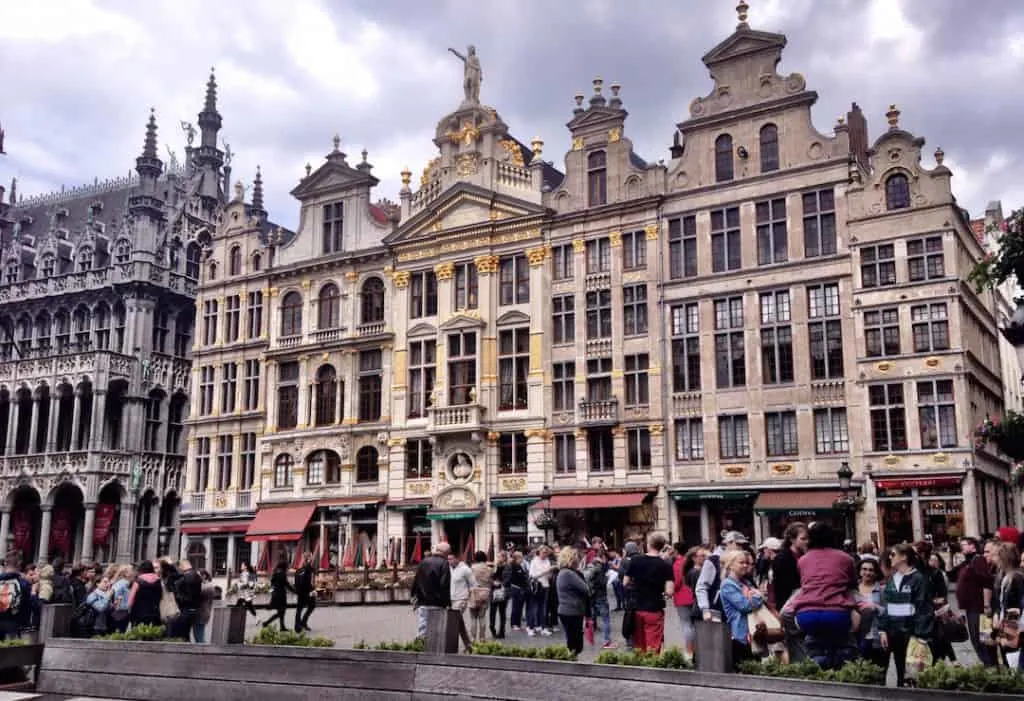
But we’ve also observed another reality: the very same people who want to avoid a “touristy” experience pass on less frequently visited places in Europe in favor of most visited places with direct flights that seem “familiar” or have a sort of “must-do” cachet. They’ll check off a comparatively uninspired bucket list: the big 5 (London, Paris, Rome, Amsterdam, Barcelona), or perhaps a cruise with not enough time in a great place other than to scratch the surface.
Don’t get us wrong! We’re thrilled whenever anyone gets their passport out of the drawer (and even more thrilled for you if you’re a first timer) to book a trip. But we’re here to say there are a great number of underrated destinations in Europe that deserve your consideration when you’re doing so.
Americans have become conditioned: with a typically minimal amount of vacation time during the summer months, we’re compelled to prioritize, and we pack our itineraries exhaustingly full in the short number of days we inevitably have. But what if there was an alternative?
There is! Consider going off the beaten track! This doesn’t have to be scary at all, but it will be exhilarating, intriguing, and rewarding. Getting to know a less familiar destination in more depth will create a life-long association, and may even trigger new interests.

Many less frequently visited destinations in Europe offer the opportunity to immerse in a relatively unspoiled fashion. The best hidden gems have fewer tourists, particularly in the off and shoulder seasons, which we consider to be the best time to visit.
One of the best things about off the path destinations in Europe is that they are more interesting because there is a sense of discovery. You could find the perfect place that seemingly no one else has visited, whether in a city center, national park, above the Arctic Circle, along the narrow streets of several small villages, or in the main square of a small town. The natural beauty of a mountain range, the sandy beaches of the Mediterranean Sea, or the rich history of medieval castles in many European cities can turn a lesser-known destination into a main attraction. It’s all just a matter of personal taste!
You may feel more welcome than in an over-crowded venue; locals appreciate individual visitors more when there are fewer of them. Other places in Europe that aren’t visited as frequently may still have a fair amount of tourists, but not be so packed that the destination considers methods to contain their numbers (such as Venice and Barcelona are doing). It’s all comparative.
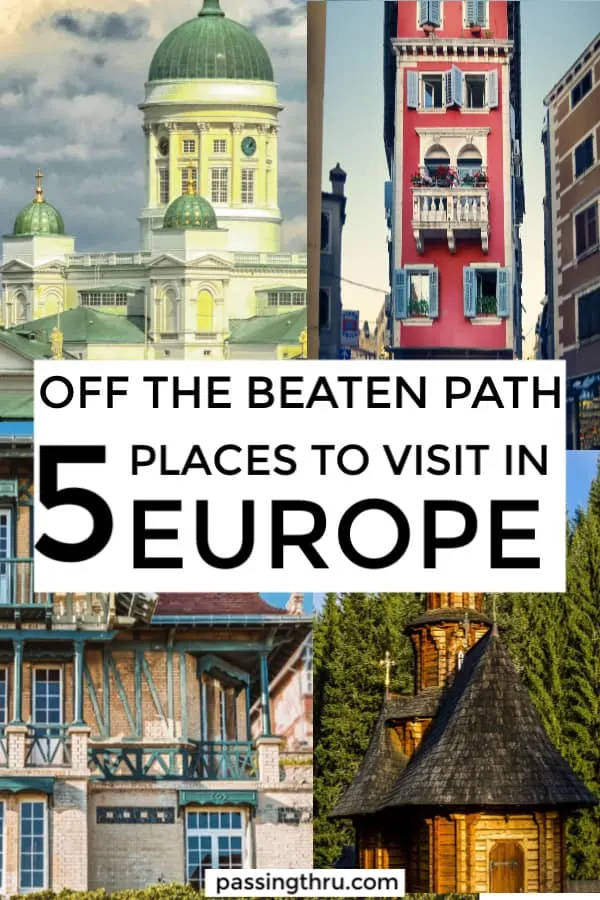
The most unique emerging destinations in Europe may see busy tourist activity in a very narrow way, perhaps only in the center city, for example. You might just be an anomaly by venturing only a few miles out of town, able to absorb the scenery and culture in a more authentic fashion.
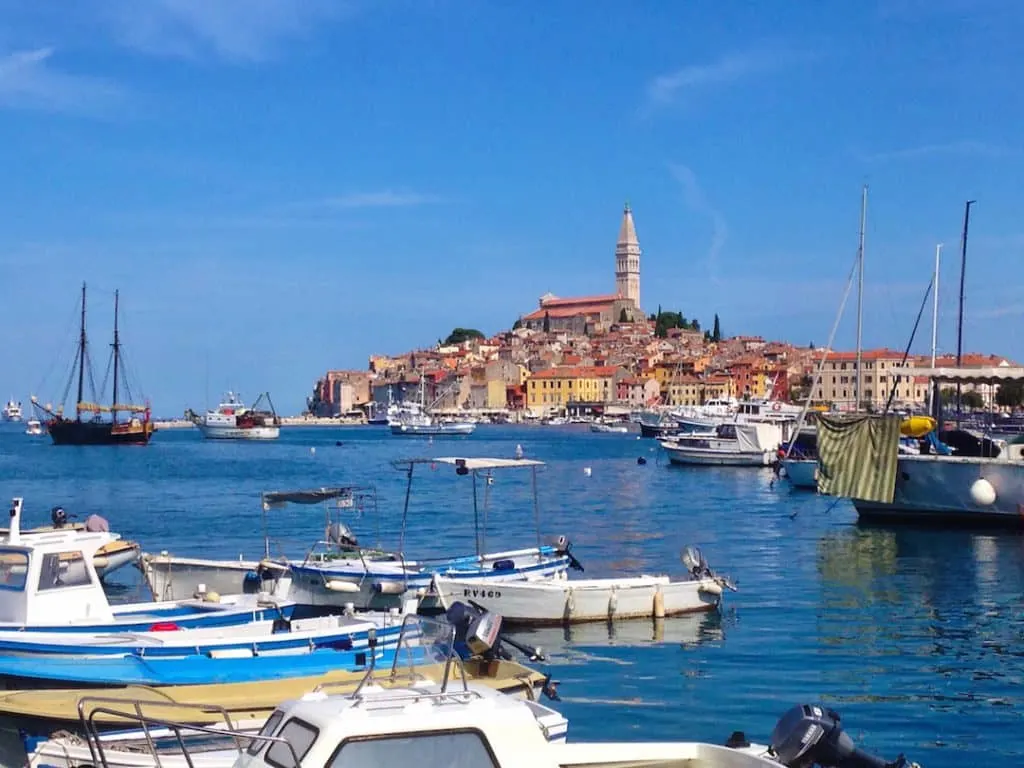
In this post, we hope to inspire you with a range of ideas on where to go in Europe off the beaten path right now. Time is of the essence, though. Off the beaten path destinations in Europe are being catapulted out of obscurity. Other incredible places are already popular, but not first-tier.
While we may “always have Paris,” it’s highly likely the places we’re recommending today might become vastly changed in the next few years. The perfect destination might well become a popular destination! With all that in mind, these are the suggestions we have for you:
Off the Beaten Path Europe: Eastern Baltic Capitals
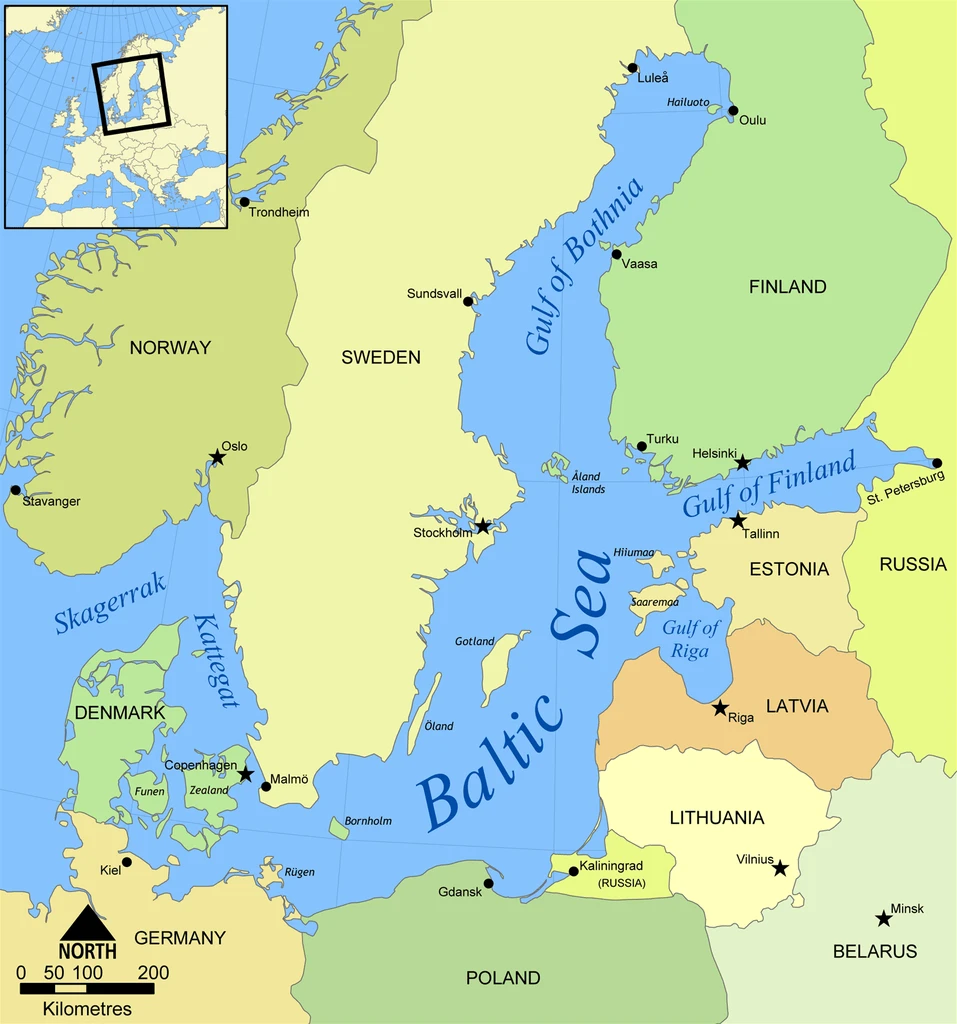
The Eastern Baltic is just simply fascinating. This region is where Scandinavian and Slav collide in glorious architecture, intense history, tribal and ethnic affiliations, and seemingly incomprehensible (to American ears, anyway) languages. Throughout the centuries, religious and political empires have warred and conquered, expanded and contracted around the main ports of the eastern Baltic.
Hanseatic merchant states gave way to the Swedish Empire, which in turn was defeated by Peter the Great’s Russia. Battles in the Crimean and World Wars were fought on land and sea here. In the 20th century, the Soviet Union controlled additional territory arising out of mutual assistance treaties associated with the Molotov-Ribbentrop Pact, and after Nazi Germany was defeated.
Independence to Finland, Estonia, Latvia and Lithuania is relatively recent, interrupted as it was in all four states during the mid-20th century, and then regained.
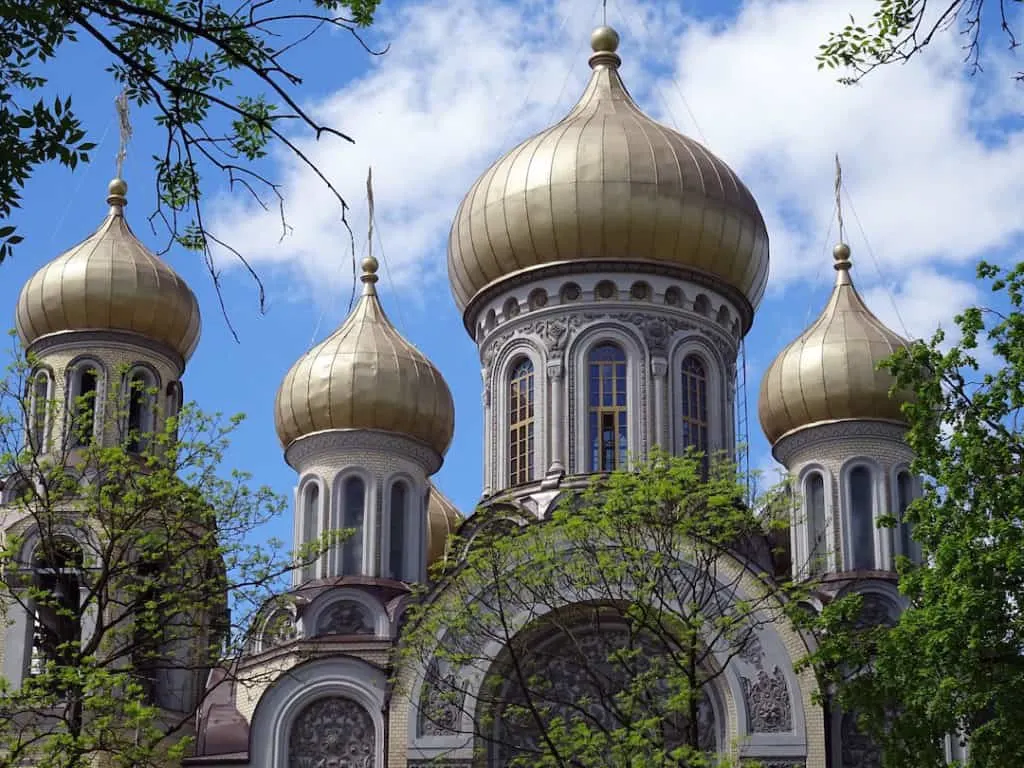
If this is your first visit to the Eastern Baltic, you’ll want to head to the capitals. Each has distinct differences, but you’ll notice language affinities: Helsinki with Tallinn, Riga with Vilnius. For Americans, it’s easy to visit Finland, Estonia, Latvia and Lithuania as they are part of the European Union and the Schengen zone (where no visa is required of Americans for a 90-day cumulative stay within a 180 day period). Bonus points for you if you undertake the Russian visa process.
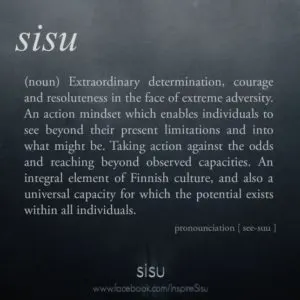
Helsinki, Finland
Helsinki is a lively city, yet very compact and walkable. It gets “underrated destinations in Europe” billing because it is often overlooked in favor of the other Scandinavian capitals – Oslo, Stockholm and Copenhagen. This is an oversight you’ll want to take advantage of for a couple of reasons:
1) Northern European capitals can be super expensive. Helsinki is relatively less so, yet still gives that appealing Scandinavian vibe. While the other Baltic capitals are less expensive, it’s still possible to enjoy an evening out and a nice hotel room at rates that won’t leave you gasping.
2) Helsinki has an edginess – a tough determination. This is sisu – a word without a corresponding English definition. Helskinki’s island-dotted, rocky coastline and large forested areas embody this rugged Finnish sense of individualism. You only need look eastward toward the Russian border to realize how vital this proactive mindset has been throughout history.
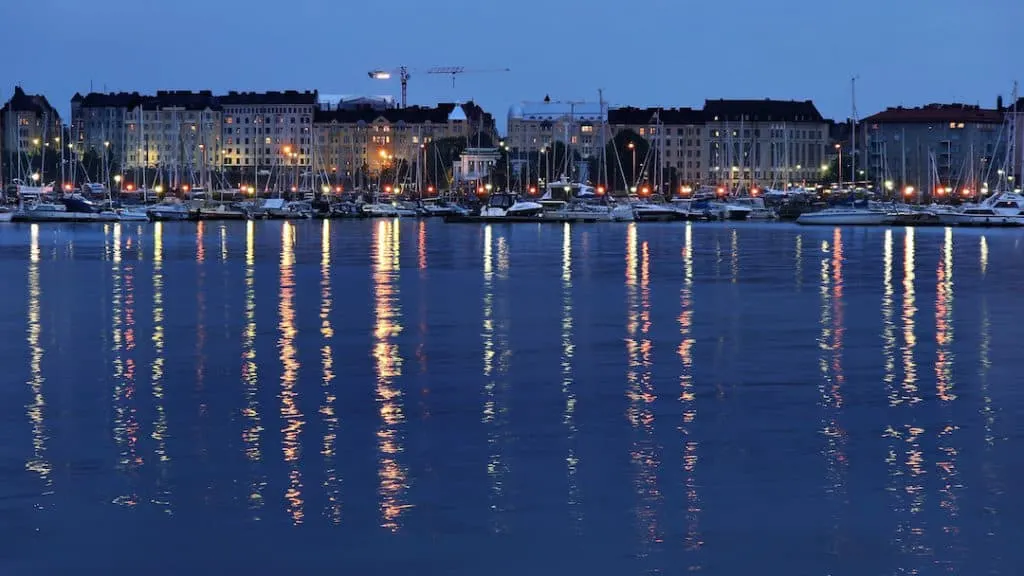
Helsinki has lots of green space and is super clean and tidy, with atmospheric historic neighborhoods and beautiful archipelago vistas. In summer, everyone comes out of hibernation to soak in sun and sea. In winter, cozy venues provide refuge from the cold. The city is livable and lively, just the way we like things.
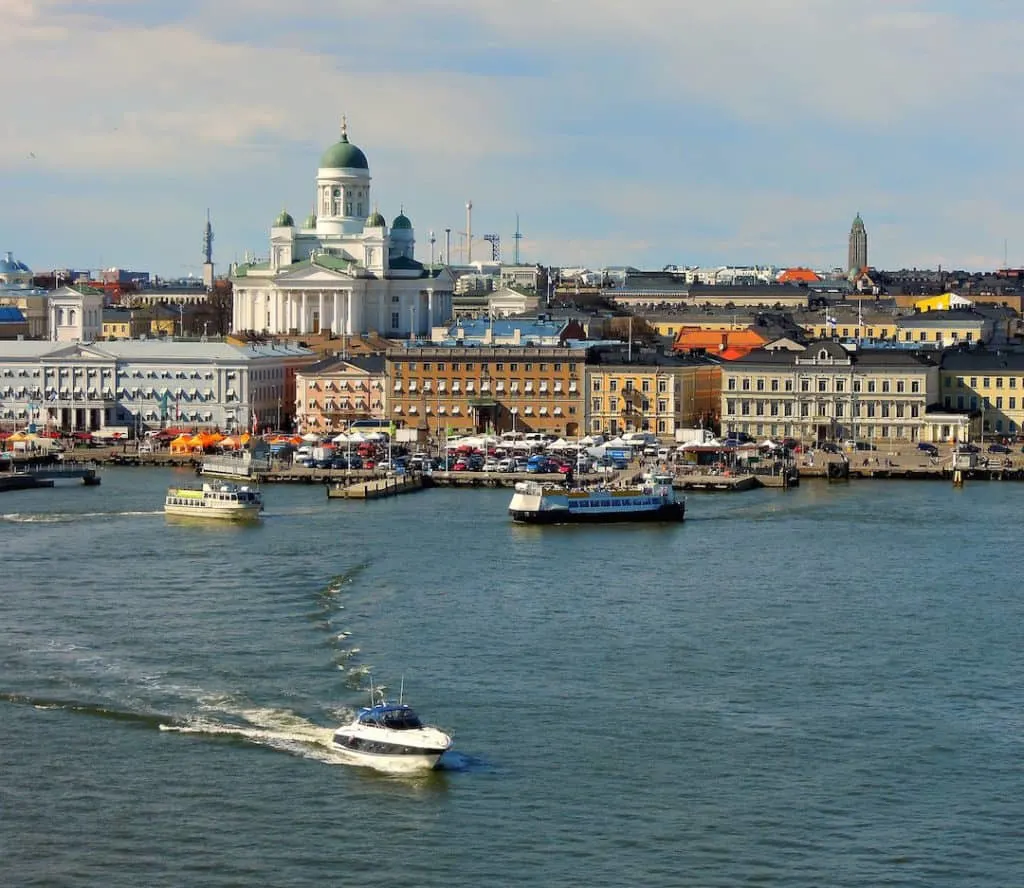
Things to Do to Get Acquainted with Helsinki
Central Helsinki Tour – Highlights of Helsinki on a guided, exploratory walking tour. See significant sites and learn about the city’s architecture, foodie scene, cafe culture, and historical background. Good for cruise day-trippers. Click here for more information.
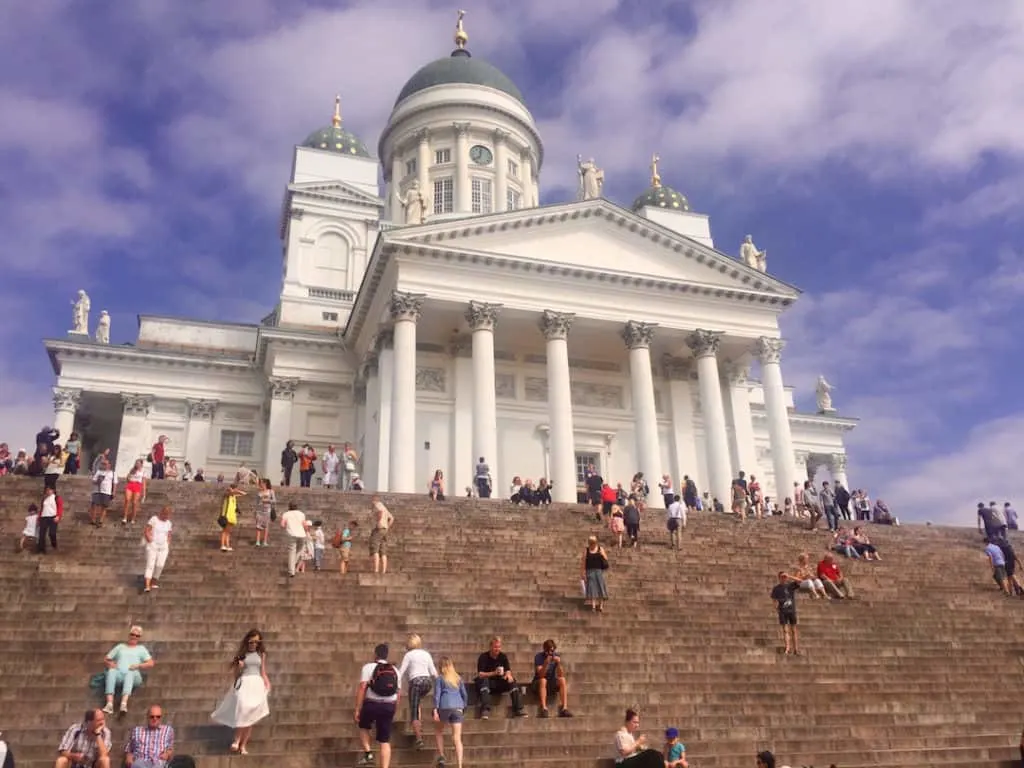
Helsinki: 2-Hour Forest Walk – See the best of green Helsinki on a leisurely stroll through its east side traditional garden allotments, summer cottages, deep forest areas, with time at a beach for swimming in season. Click here for more information.
Helsinki: Private Food & Beer Tour – A tour of central Market Square and Hall for sampling, separate tastings at a local brewery and bar, and a classic Finnish restaurant for traditional cooking and dessert. Click here for more information.

Helsinki: 90 minute Boat Sightseeing Canal Route – A cruise with commentary passes Suomenlinna (historical fortress and UNESCO site), the Korkeasaari Island zoo, and the Degero Canal. Refreshments for purchase on board.Click here for more information.
Helsinki: Helsinki and Suomenlinna – A 5-hour day tour to the island fortress and UNESCO site along with the Jean Sibelius monument, Senate Square, Market Hall and Square, and the Uspenski Orthodox Church (largest in Western Europe). Click here for more information.
Click Here to See More Tours in Finland
Click Here to Check Out Hotels in Helsinki
Tallinn, Estonia
A 50 mile ferry ride from Helsinki across the Gulf of Finland, Tallinn has been the site of human settlements for over 5,000 years. Tallinn’s Old Town – a UNESCO heritage site – is a perfectly preserved example of a walled, medieval city dating back to the 13th century. While Tallinn can be comparatively heavily touristed, it’s still one of the less known places in Europe for Americans.
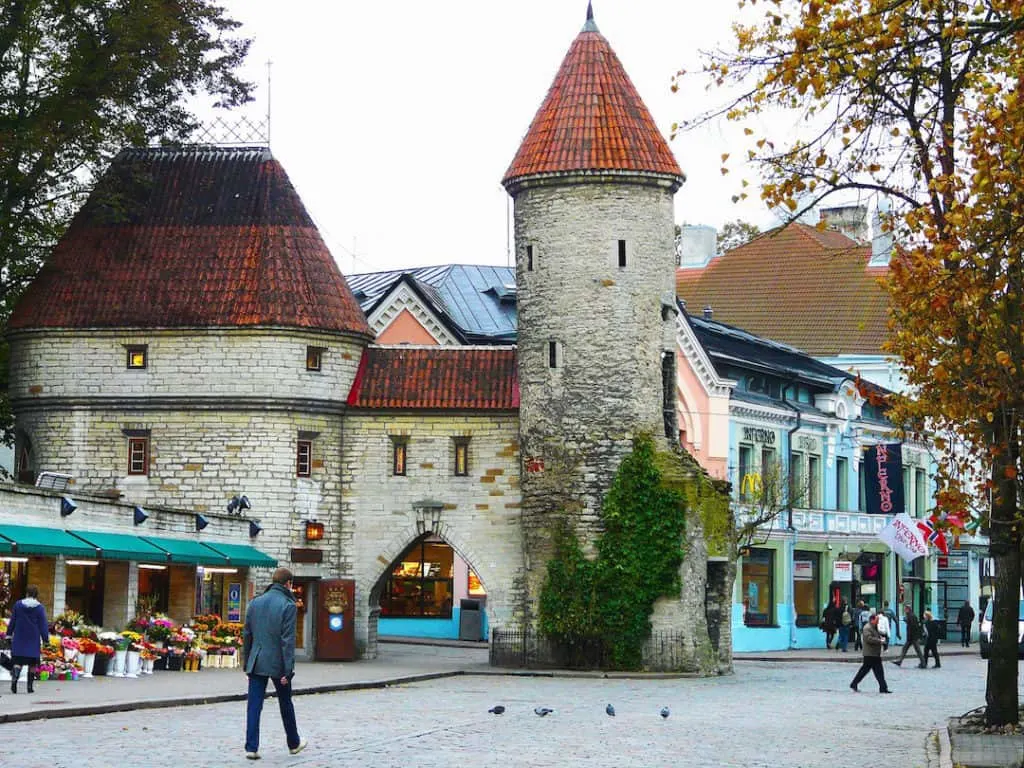
Recently, Tallinn has created a name for itself as the de facto digital capital of Europe – with more startups per capita than any other location in Europe. Tallinn is the centerpiece of an Estonian digital citizenship program for international entrepreneurs, the birthplace of innovative online companies such as Skype, and has the most highly competitive financial climate in Northern Europe.
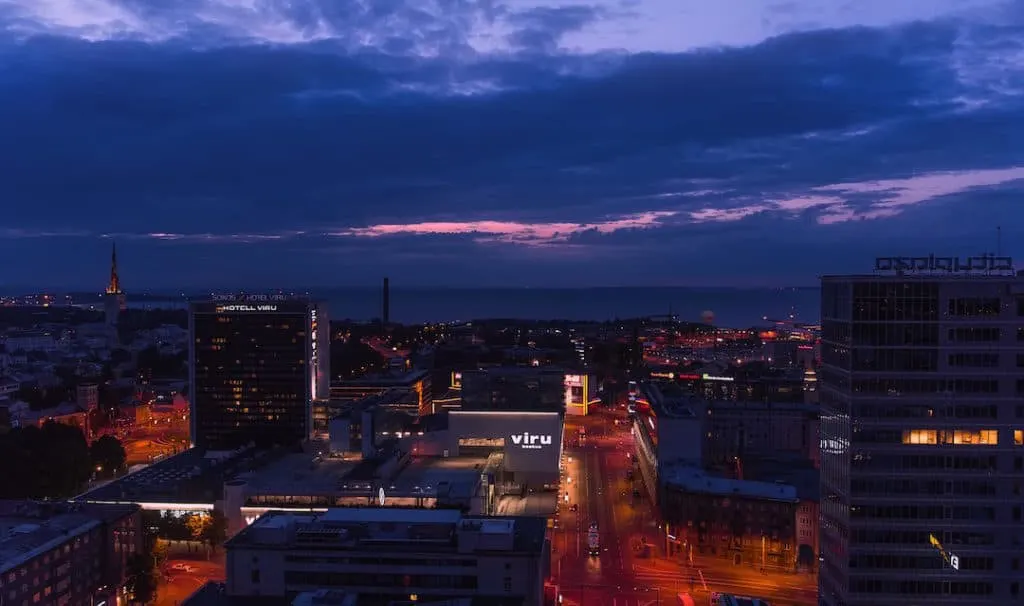
More than 20 different national flags have flown over Tallinn in a span of eight centuries. Although more than 4 million tourists visit Tallinn each year, we found the number of visitors unobjectionable when we visited during the high summer season.
Things to Do to Get Acquainted with Tallinn and Estonia
Tallinn: Bike Tour Best of the City – Cycle beyond Old Town through several distinctive neighborhoods: the charming 19th century Kalamaja, filled with brightly-painted wooden houses, each with a distinctive door; Seaplane Harbor maritime area, Kopli (an early 20th century working class neighborhood where we stayed), Pelguranna Beach and the Telliskivi Creative City. Click here for more information.
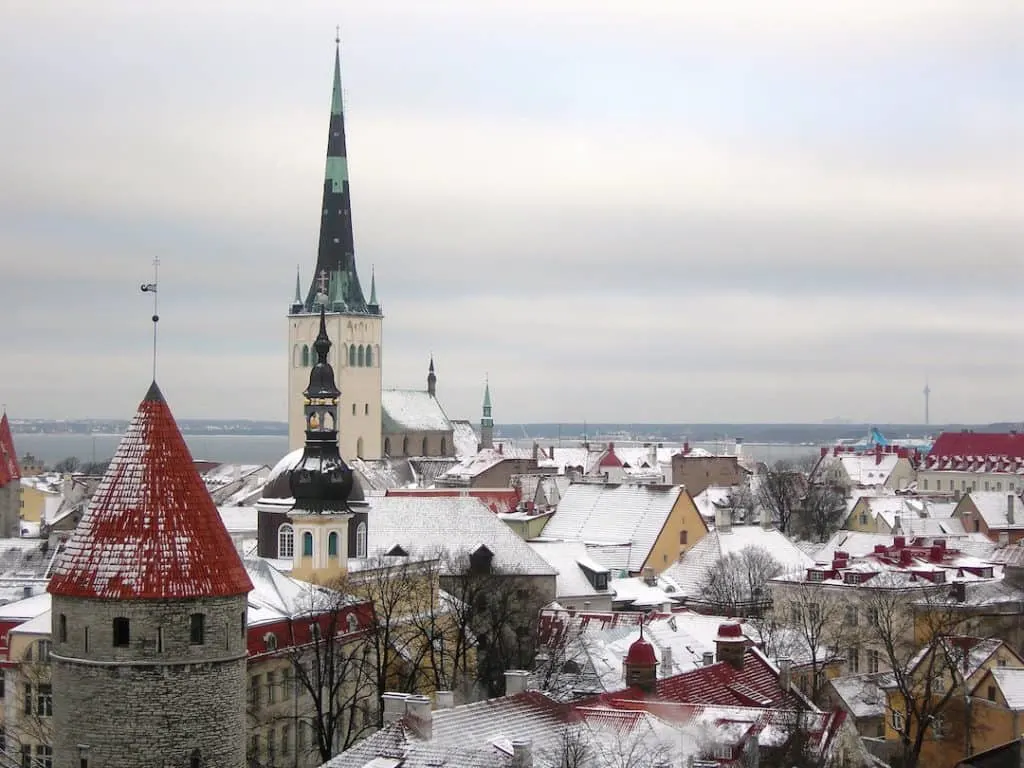
Tallinn: 3-Hour Medieval Walking Tour – Walk along narrow, medieval cobblestoned byways to the Upper (nobility) and Lower (merchant) portions of Tallinn’s Old Town. Town houses date from the 14th to 15th century. Visit the viewing platform for an overlook. Finish in the Old Town Square with recommendations for restaurants and shopping. Click here for more information.
Tallinn: 1-½ Hour Private Old Town Walking Tour – Explore medieval Old Town’s square, courtyards, churches and residences. Learn about Toompea Hill’s viewing platforms and visit Parliament. Discover St. Catherine’s Passage where guild member craftsmen lived and worked, and the 13th century Dominican monastery. Click here for more information.
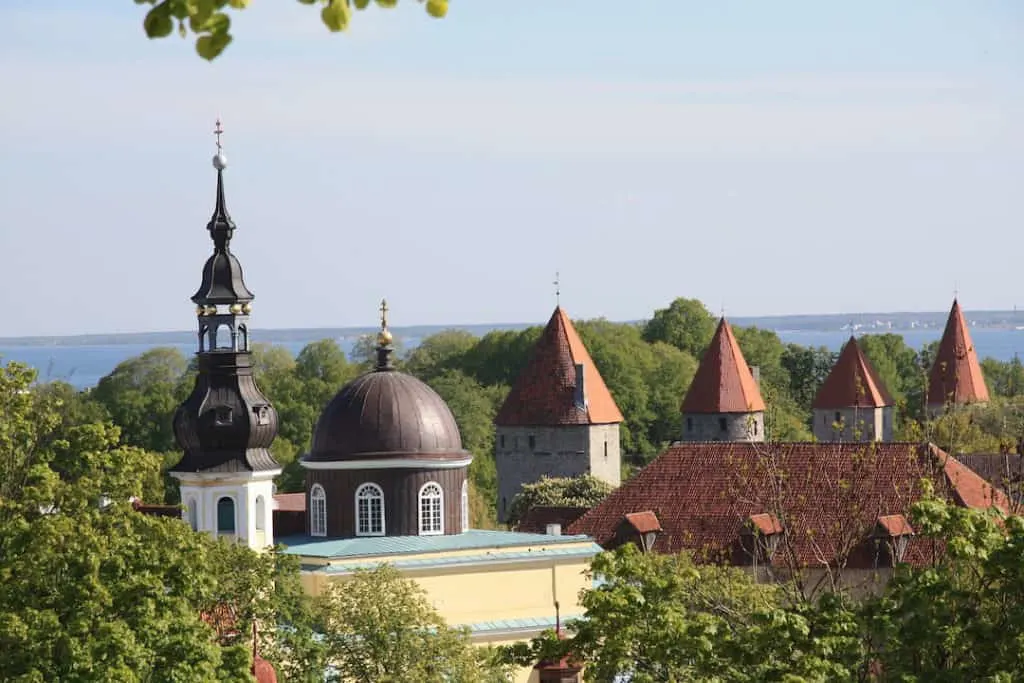
Tallinn Food Tour – A 3-hour discovery of Estonian cuisine, which blends Russian, Nordic and German influences. Visit Baltic Station Market and a half dozen food and drink stops where you’ll try traditional favorites and modern interpretations. Menus will vary by season. Click here for more information.
Western Coast of Estonia Full Day Tour from Tallinn – Visit the Estonian coastal wilderness and the military town of Paldiski. See waterfalls, limestone cliffs, a wind park, and lunar-like quarry landscapes. Explore an old Soviet army base and a medieval monastery fort. Click here for more information.
Click Here to See More Tours in Estonia
Click Here to Check Out Hotels in Tallinn
Riga, Latvia
Riga, the largest of the three Baltic States’ capitals, was founded in the 13th century and became part of the Hanseatic League in the 15th century. The city’s center is a UNESCO world heritage site, with architecture in the art nouveau/Jugendstil style, as well as 19th century wooden buildings.
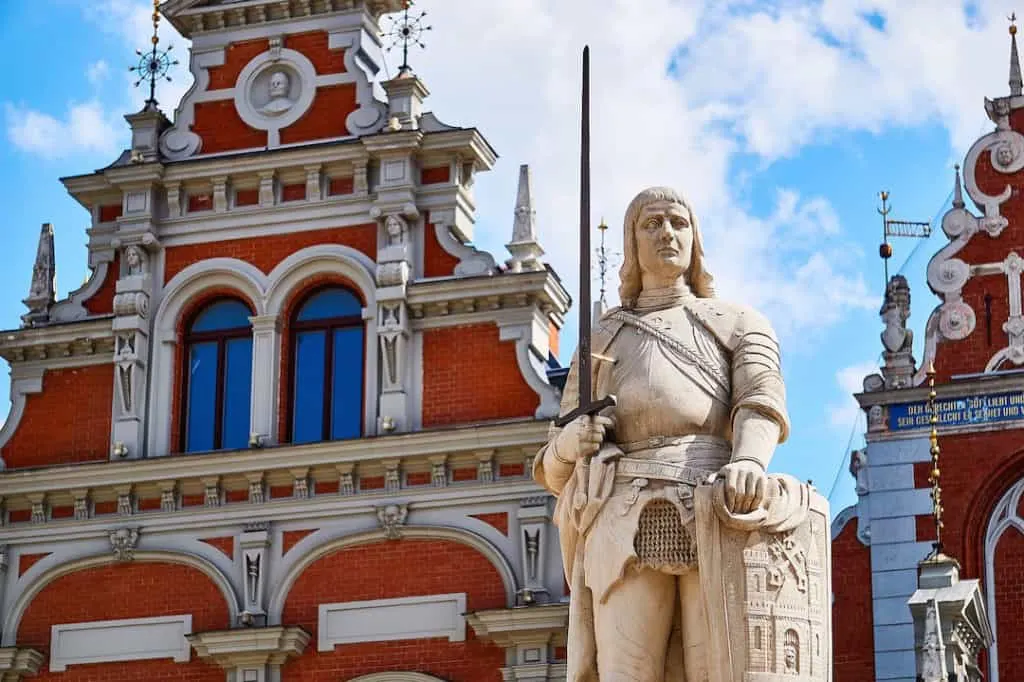
Eleven different flags have flown over Riga in its eight centuries of existence, but its harbor has been in use since at least the 3rd century, if not longer. An important trading center, Riga was often at the crossroads of ambitious political, religious and economic influences. Riga’s population of just over 600,000 has declined by one-third since 1990, caused by emigration and low birth rates subsequent to the ending of Soviet control.
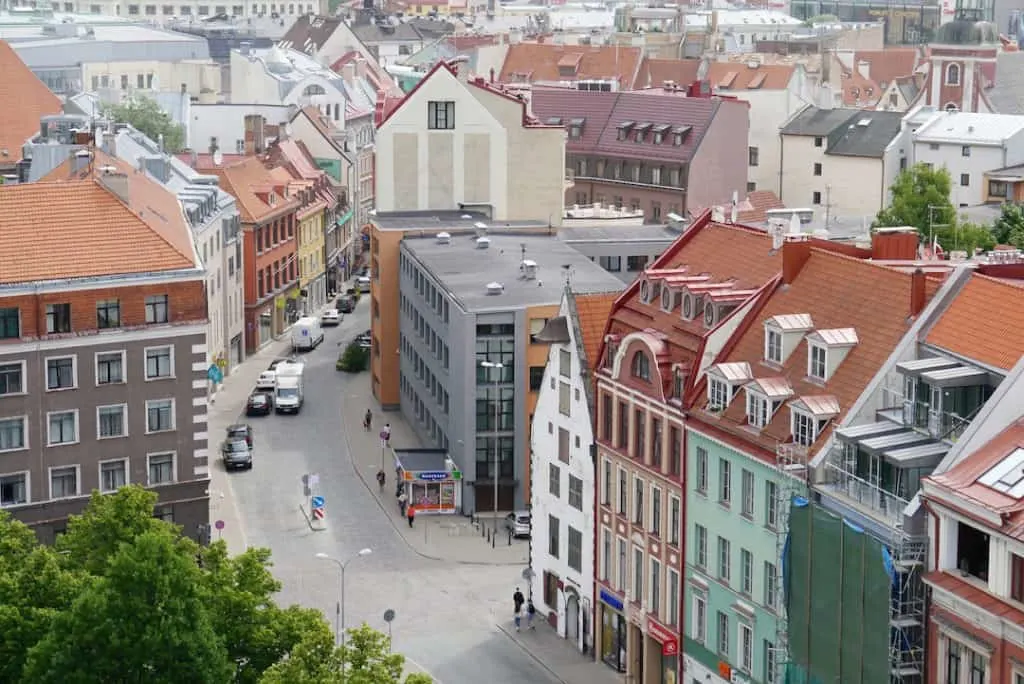
Riga is generally considered to be one of the best off the path destinations in Europe for architecture lovers. It has the largest concentration of art nouveau buildings in the world, built during a boom period of economic growth and prosperity at the turn of the 19th/20th centuries. Between 1910 and 1913, an average of 400 new buildings per year were built in Riga outside the Old Town city walls.
Things to Do to Get Acquainted with Riga and Latvia
Riga: Private Tour with a Local – A customized tour – you specify the length – with a local guide will acquaint you with top attractions and orient you to the city. Learn where to shop, eat and drink and meet friendly people. Click here for more information.
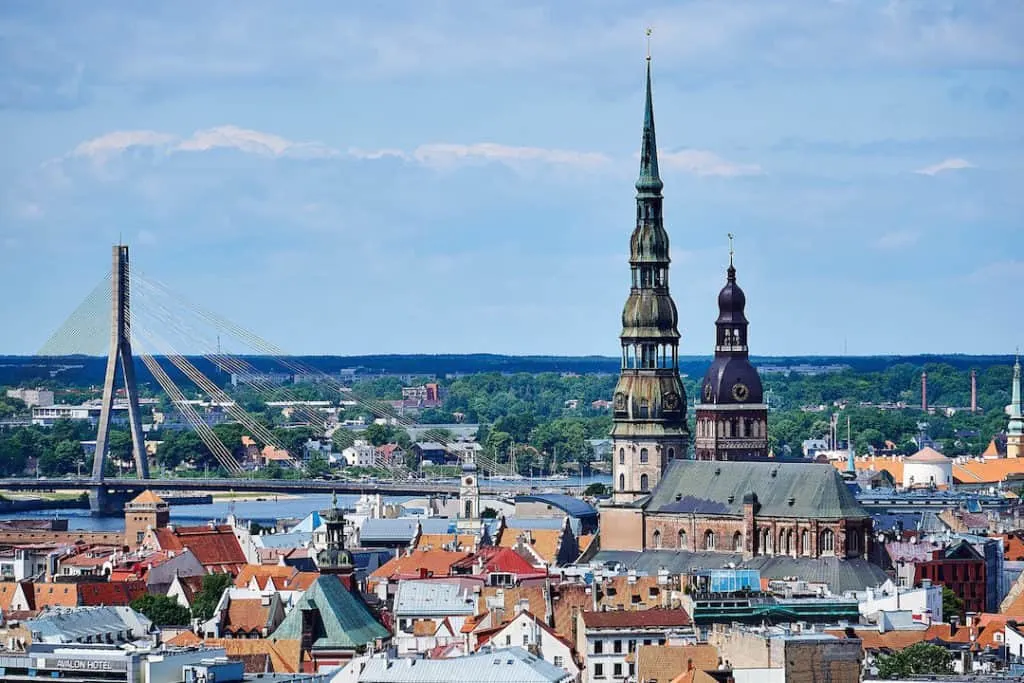
Best of Riga Food and Culture 4-Hour Walking Tour – A stroll through the city’s most essential districts: Old Riga, art nouveau neighborhoods, and the Riga Central Market – Europe’s largest market and bazaar. Learn about the city’s history and sample local cuisine. Click here for more information.
Riga’s Old Center and Art Nouveau Tour – A guided tour of the Hanseatic Old Town and the art nouveau Alberta Street and Embassy districts. See attractions such as the Powder Tower, Swedish Gates and St. Peter’s Church. Click here for more information.
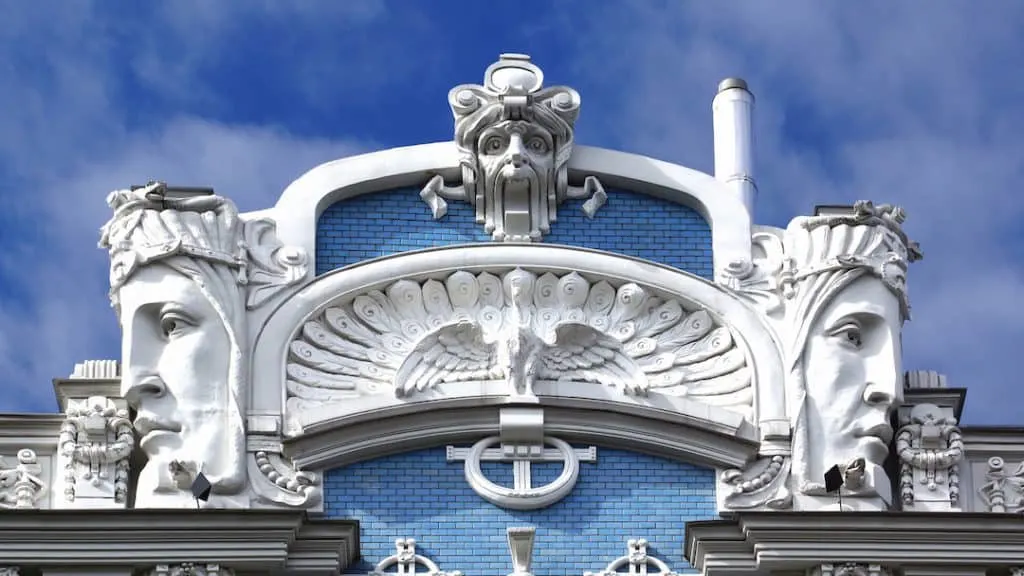
Riga: 3-Hour Soviet Ghosts Walking Tour – Learn the legacy of Soviet control over life behind the Iron Curtain. See Soviet era buildings, taste Soviet-influenced food and learn about the independence movement in Latvia. Click here for more information.
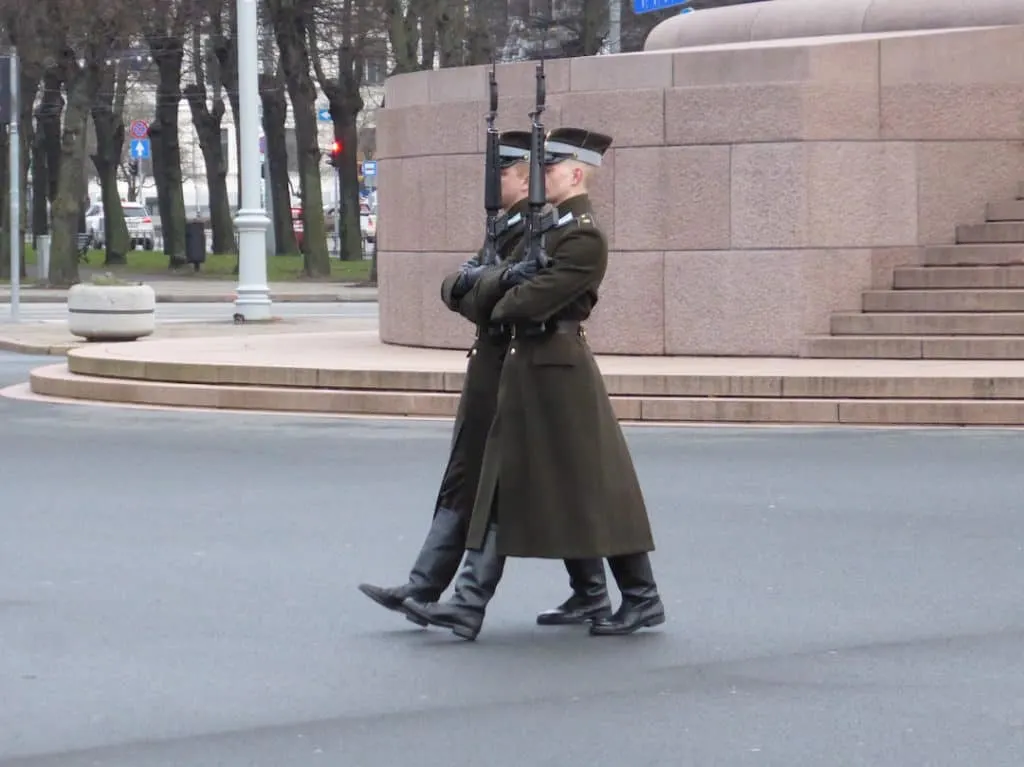
Day Trip to Cesis and Latvian Switzerland – A full 11 hour day with visits to three cities, four castles, cave, grotto, and a historical museum reserve. Ruins and glacial valley views. Click here for more information.
Click Here to See More Tours in Latvia
Click Here to Check Out Hotels in Riga
Vilnius, Lithuania
We are amazed by the rich Lithuanian heritage that made its way into the new world via emigres to Midwestern communities, where we both were raised. There are many reasons why Vilnius is one of the more unique emerging destinations in Europe.

Vilnius has the largest medieval Old Town (on the UNESCO World Heritage List) of any city in Europe: over 1-1/2 square miles with almost 2,000 buildings.
Vilnius is easy on the budget: as one of Europe’s lesser-known cities, it is one of the least expensive, with trendy bars and restaurants making for popular spots. Worth visiting just for its architecture, Vilnius is an amalgam of baroque, Gothic, neoclassical and renaissance buildings. Vilnius also has a remarkable Jewish history – including the first partisan unit organized against the Nazis during WWII.
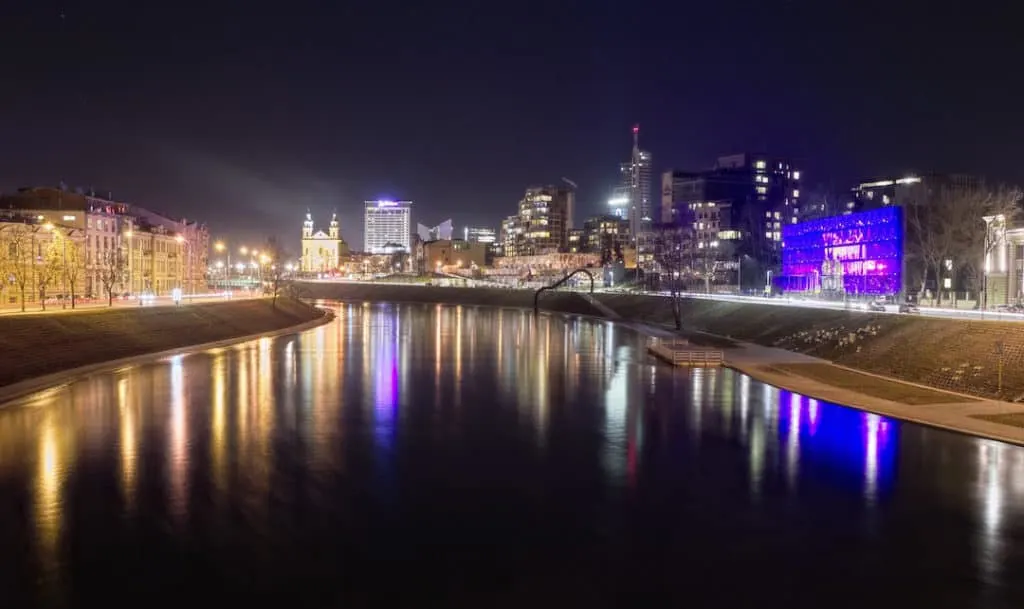
Things to Do to Get Acquainted with Vilnius and Lithuania
Vilnius Private Tour with a Local – Explore the city in a customized tour with a friendly local guide who is passionate about Vilnius to get to know your neighborhood, and the city beyond with insider tips and tricks. Click here for more information.

Vilnius Soviet Stories Small Group Tour – Dig into the past with a detailed look at life behind the Iron Curtain. Stop at a Soviet-era restaurant for typical cuisine, learn about wedding traditions at the wedding palace, and visit the former KGB headquarters. Click here for more information.
Majestic and Royal Vilnius Tour – A two hour walking tour introduces you to historical figures such as Great Duke Gediminas, Queen Bona, Vladislav Vasav, and Steponas Batoras. Click here for more information.
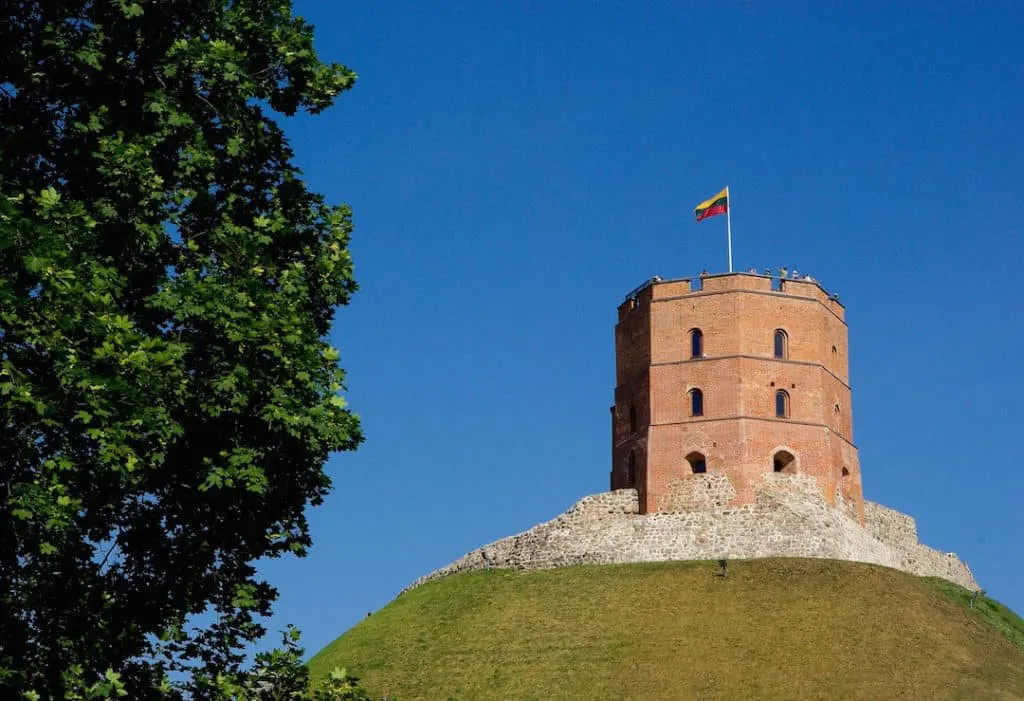
Vilnius: 3-Hour Jewish Heritage Tour – Learn about Jewish heroes and leaders, explore the former Jewish ghetto, visit the Jewish Cemetery. Travel by comfortable mini-bus with English-speaking guide who takes you back in history as far as the 13th century. Click here for more information.
The Hill of Crosses Full Day Tour from Vilnius – Learn about the symbolism associated with traditional cross-making, visit memorials dedicated to wartime partisans, see crosses made to commemorate papal and political visitors such as Pope John Paul II and Ronald Reagan. Click here for more information.
Click Here to See More Tours in Lithuania
Click Here to Check Out Hotels in Vilnius
Bonus Points: St. Petersburg, Russia
Note: The United States State Department has issued a Level 4 (Red) Do Not Travel to Russia as of February 13, 2023. For up-to-date information, click here. Due to international bank sanctions, U.S. debit and credit cards do not work in Russia, and U.S. citizens may be subject to unlawful detention.
Still, we’ve included St. Petersburg in our narrative of off the beaten path destinations in Europe, because no recommendation for the eastern Baltic would be complete without it.
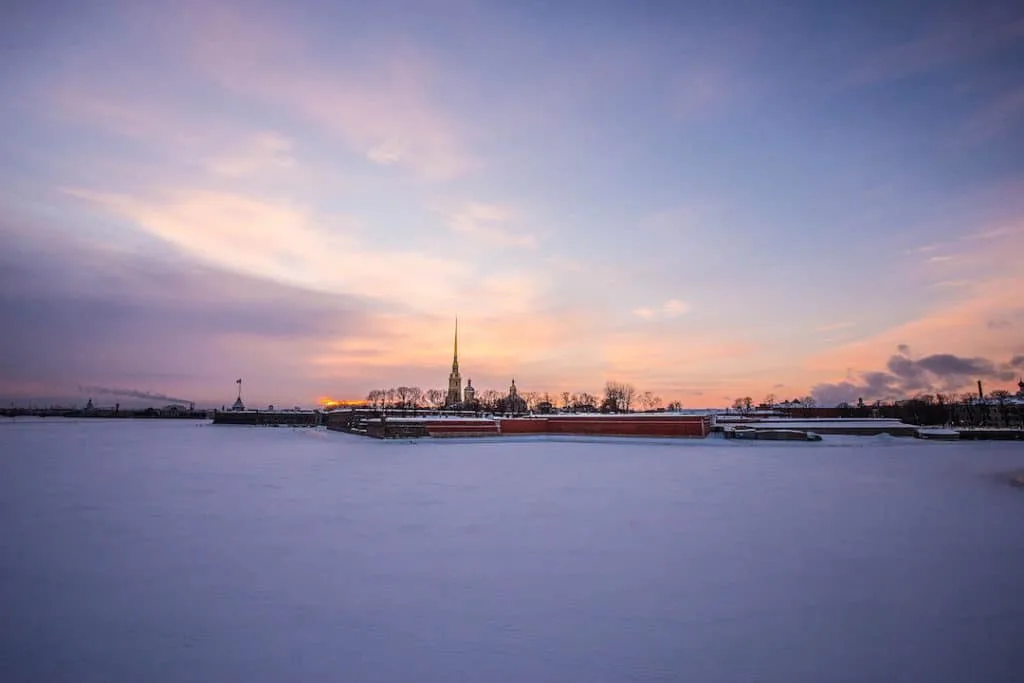
Peter the Great’s former capital was the staging area for his ambitions both domestic and abroad. The seat of the Russian Empire in Peter’s day, the city was originally founded by Swedish colonists in the early 17th century. By 1703, Peter had captured it, in accordance with his desire to have a seaport on the Baltic.
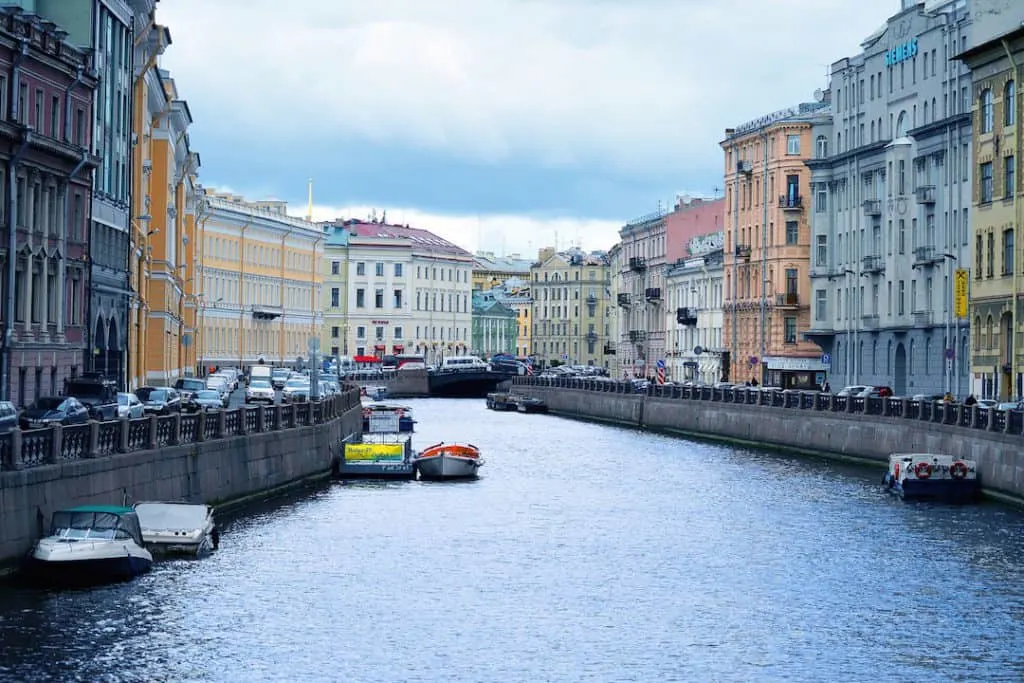
By 1712, St. Petersburg was Russia’s capital and it remained so except for a brief four years until the Russian revolution in 1917. The city – a UNESCO Heritage Site – is filled with more than 8,000 neo-classical, romanticist, and Empire style buildings. Later, constructivist and Stalinist buildings were erected during the Soviet years. St. Petersburg is the second largest city in Russia after Moscow. The city is home to more than 200 museums and has a lively dance, film, literature and music tradition.
Things to Do to Acquaint Yourself with St. Petersburg
St. Petersburg 1 or 2 day Hop On Hop Off Bus Ticket – The best way we know to become acquainted with a new city. Choose from one or two day passes and get on and off at will when you see something interesting. Click here for more information.
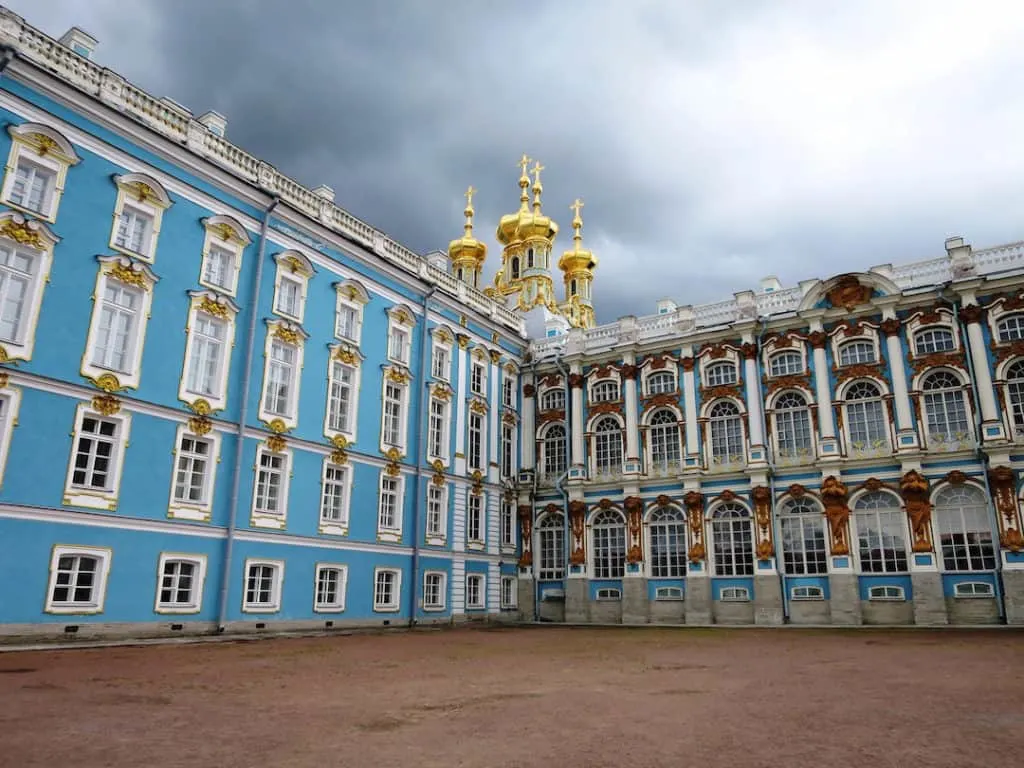
Skip the Line Hermitage Tour – If there is one reason to visit St. Petersburg, it’s to see the Hermitage, the museum of art and culture founded by Catherine the Great in 1764, after she acquired a significant collection of European paintings. With more than 3 million artifacts, the Hermitage is the second largest museum in the world. Click here for more information.
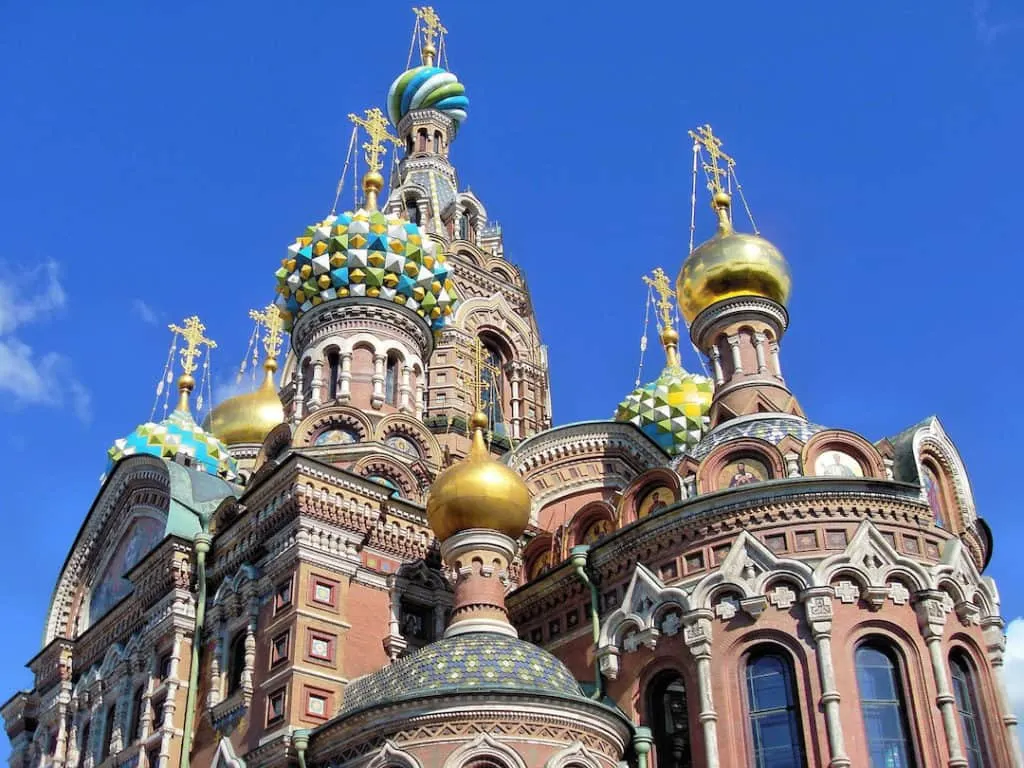
Private Tour of Church on the Spilt Blood – A three hour tour with private guide to the most iconic cathedral in Russia, built on the site where Alexander II was assassinated in 1881. Click here fore more information.
Russian Folk Show Evening in Nicolavevsky Palace – A colorful dance, choir and instrumental performance in the Grand Duke’s palace. Includes buffet and drinks. Private driver pick-up and return available. Click here for more information.

Communist Leningrad – See important sites and learn about important events during the Soviet era (1917-1991). Guided tour takes you to Lenin Monument, KGB Headquarters, Crosses Prison and Peter & Paul Fortress. Click here for more information.
Click Here to See More Tours in St. Petersburg
Click Here to Check Out Hotels in St. Petersburg
Off the Beaten Path Europe: Normandy
If you’re like me, you may have visited Paris or traveled through France without making time to visit Normandy. This was a mistake I regretted for 12 years until I had the chance to return. Normandy is enough off the path in Europe that it is frequently not first on the list for a visit to France, particularly if time is limited overall.
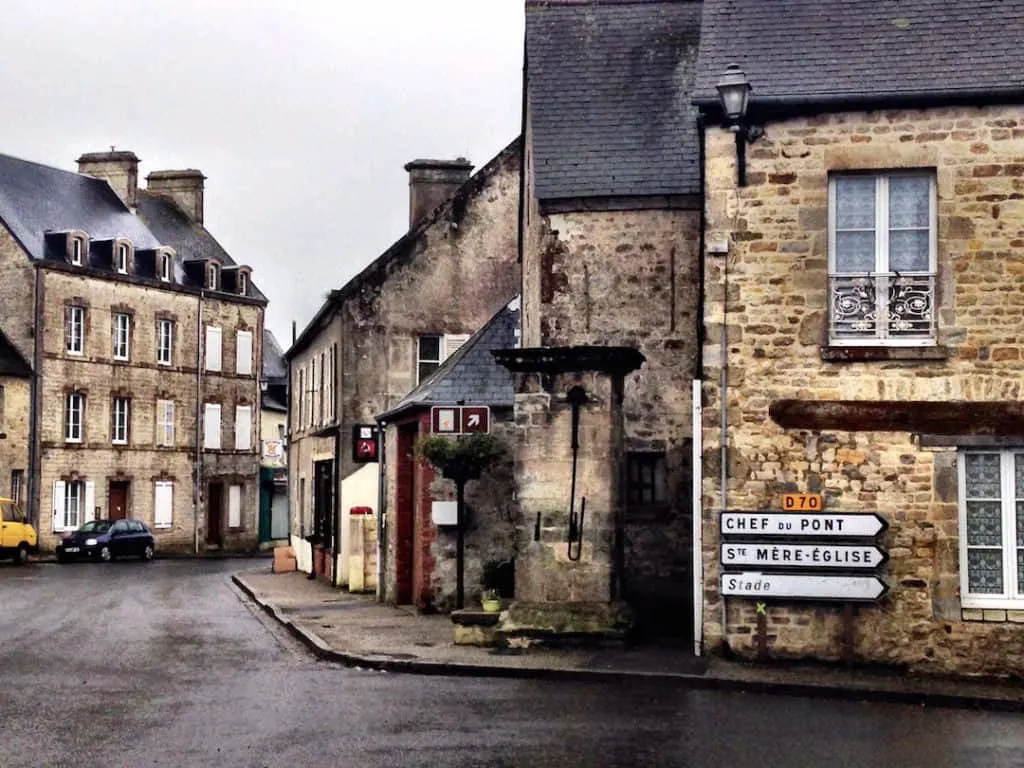
There are some who might say Normandy is one of the underrated destinations in Europe. We wouldn’t ever go that far, as it certainly exceeded our expectations, which were high to begin with. We knew we wanted to make the most of our visit and get to the D-Day landing sites and villages. We also discussed with our private guide which of the D-Day attractions we were most interested in seeing. Even though the Normandy sites are definitely not on the list of non-touristy destinations in Europe, we felt his intuitive expertise resulted in an exceptional experience. Our visit was intimate and not rushed, primarily because we went in winter. Weather was mild and a bit rainy, but certainly manageable.
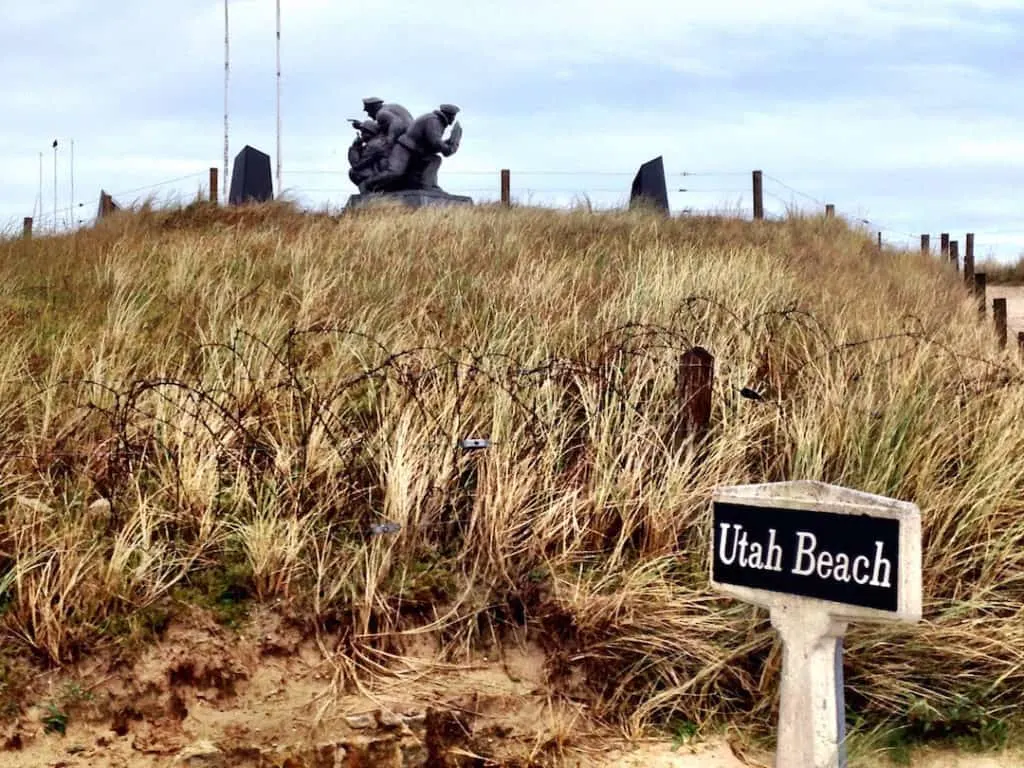
Tip: See our series of posts on the Normandy D-Day sites: Normandy D-Day Tour, Part 1: Utah Beach and Ste Marie-du-Mont; Saint Mere Eglise: Our Normandy D-Day Tour Part 2; Pointe du Hoc and Omaha Beach, Normandy Landing Sites.
Normandy isn’t all D-Day, though, by any means. Americans deciding where to go in Europe off the beaten path often visit the medieval Bayeux Tapestry exhibit and the fortress Mont St Michel, two popular attractions. Normandy is full of pretty little villages which inspired Impressionist painters, and home to the La Havre seaport where international passengers have arrived by ship in France for centuries.
Things to Do to Get Acquainted with Normandy
From Paris: Full-Day Small Group Tour to Honfleur – A small group day tour travels by mini-van from Paris with guide to explore Honfleur’s streets and harbor, as well as the “Cote Fleurie” towns of Deauville and Trouville. Fans of Impressionists like Monet and Boudin will recognize street scenes and natural landmarks. Click here for more information.
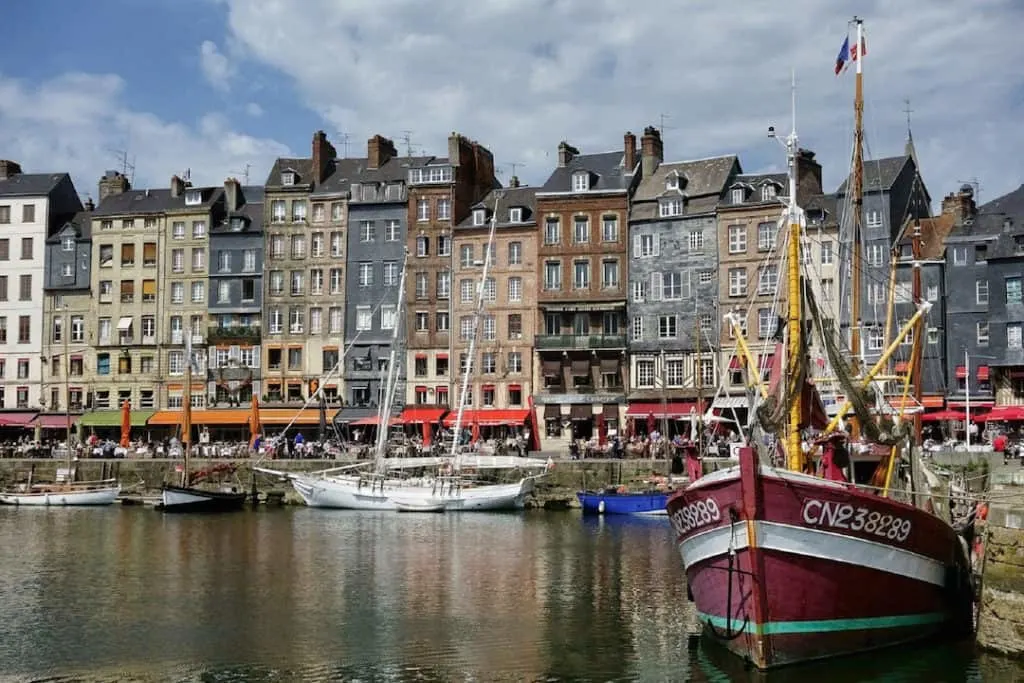
Normandy D-Day Landing Beaches Full Day Tour by MiniBus from Paris – A full day exploration by mini-bus of the American and British landing beaches, the American cemetery, Nazi bunkers, museums, and Pointe du Hoc. Maximum of 8 participants. Click here for more information.
Normandy Landing Beaches: Private Day Trip from Paris – Be transported by private car or minivan (depending upon number of participants) for a customized tour tailored to your interests. See as much as possible from the landing beaches, Pointe du Hoc, American Cemetery and Visitors Center. Lunch in Arromanches to see the temporary harbor constructed for D-Day. Additional stops at Canadian beaches, bunkers and German radar base. Click here for more information.
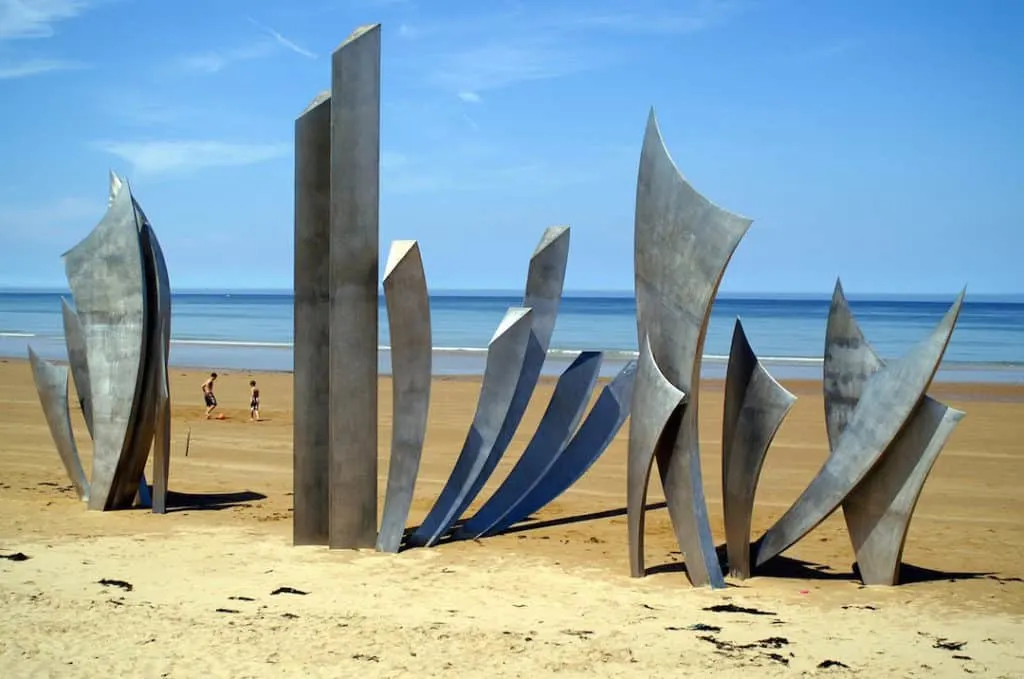
Delightful Normandy Private Guided Tour by Minibus – Explore the spectacular French coast and picturesque historical cities, try French cuisine – cheeses, Calvados and cider. Visit the Rouen Cathedral and art museum, the scenic village of Honfleur, and the twin towns of Deauville and Trouville. Click here for more information.
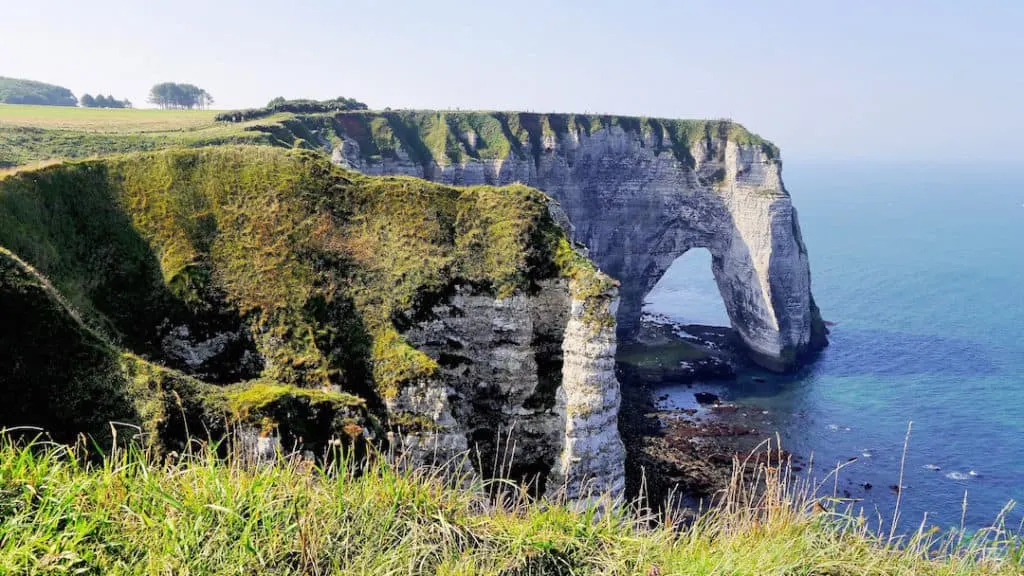
From Paris: Full-Day Mont Saint-Michel Guided Tour – Visit the village and the world famous Abbey, learn centuries of history and lunch at Relais St Michel. Multi-lingual guide, transport in air-conditioned luxury coach. Click here for more information.
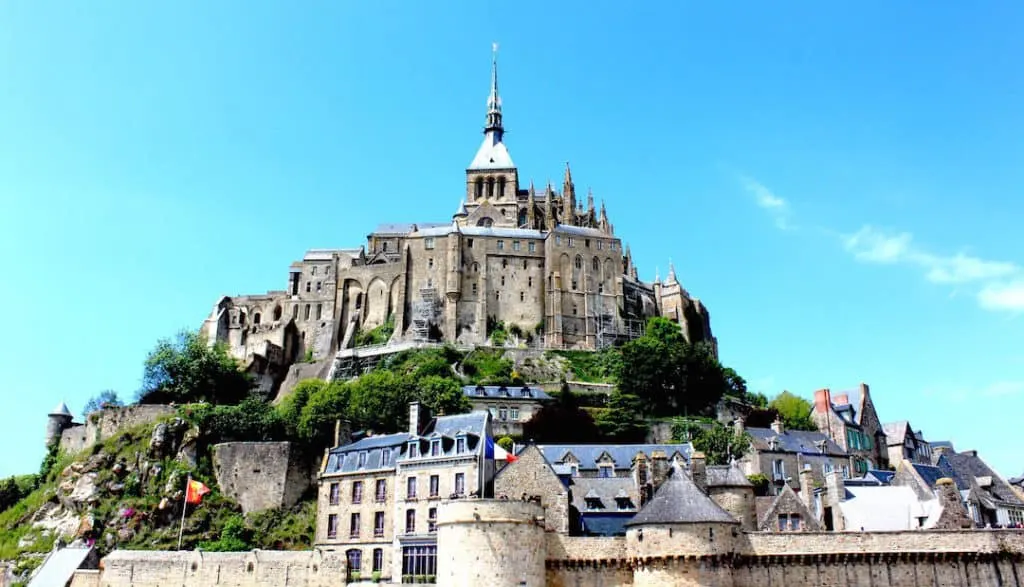
From Caen, Normandy: D-Day Landing Beaches and Museum Guided Tour – Your guide will meet you at the Caen rail station to escort you to the Memorial de Caen museum, D-Day landing beaches and sites, the American Cemetery, and Pointe du Hoc, with lunch at La Terrasse Restaurant in Caen. Click here for more information.
Click Here to See More Tours in Normandy
Click Here to Check Out Hotels in Normandy
Off the Beaten Path Europe: Brussels
To go off the path in Europe, you don’t necessarily have to go far. Easily accessible from many locations in Western Europe (including from London via the Eurostar), Brussels is one of the less frequently visited destinations in Europe by comparison with other capital cities.
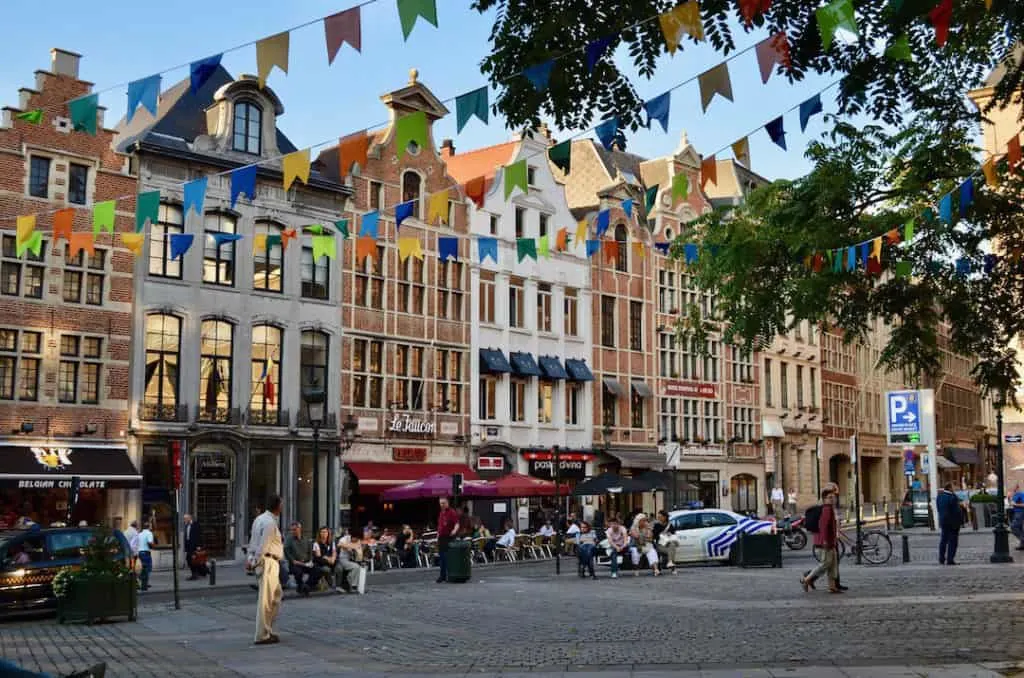
We actually think Brussels is what we wished Paris would be: more compact and manageable, friendlier, a bit less expensive. We consider it one of the non-touristy destinations in Europe, even though it does get a lot of visitors, for these reasons.
Brussels is a unique blend of Dutch (Flemish) and French elements: streets have both Dutch and French names. Belgian cuisine and beer is some of the finest we’ve tasted in all of Europe. Proximity, vibrant culture, and localized lifestyle in and around historical attractions and vintage neighborhoods make it one of the best off the path destinations in Europe without having to leave your comfort zone.
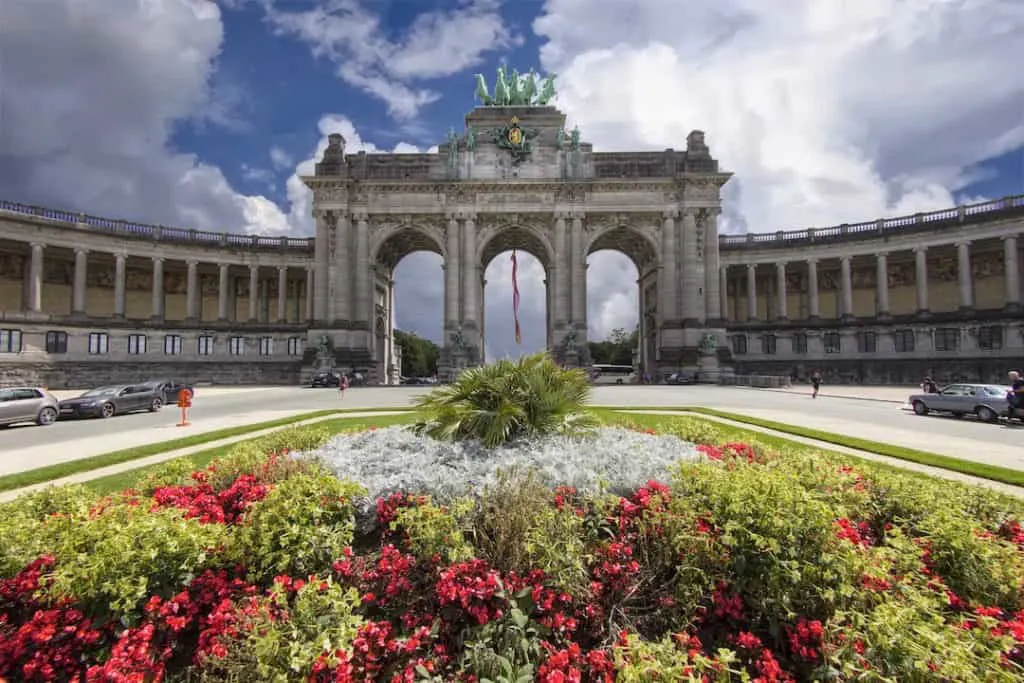
Things to Do to Get Acquainted with Brussels
Brussels 2-½ Hour Guided Walking Tour – Get to know the city’s history, culture, gastronomy, architecture and beer scene. You’ll see Grand Place, the Grand Sablon, Manneken Pis, the Royal Square and Palace, churches and museums. Click here for more information.
Brussels Atomium Admissions Ticket – The emblematic landmark constructed for the Brussels World’s Fair in 1958, has permanent history exhibits, and temporary exhibits in science and progress. Panoramic 360 degree views of the city due to its elevated location. Click here for more information.
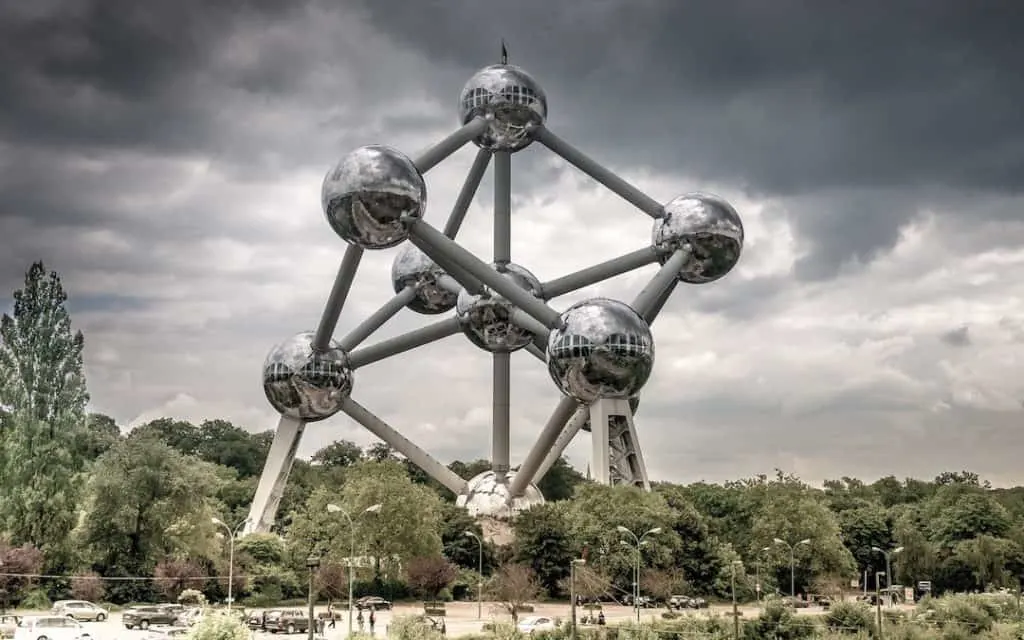
Brussels 2-½ Hour Belgian Beer Tasting Experience – Visit 3 of the top beer bars to learn what makes Belgian beer so famous. You’ll try Trappist ale, and a 3-beer tasting flight. Your tour ends at the famous Delirium Beer Cafe, with over 3,000 beers to choose from, a Guinness World Record. Click here for more information.
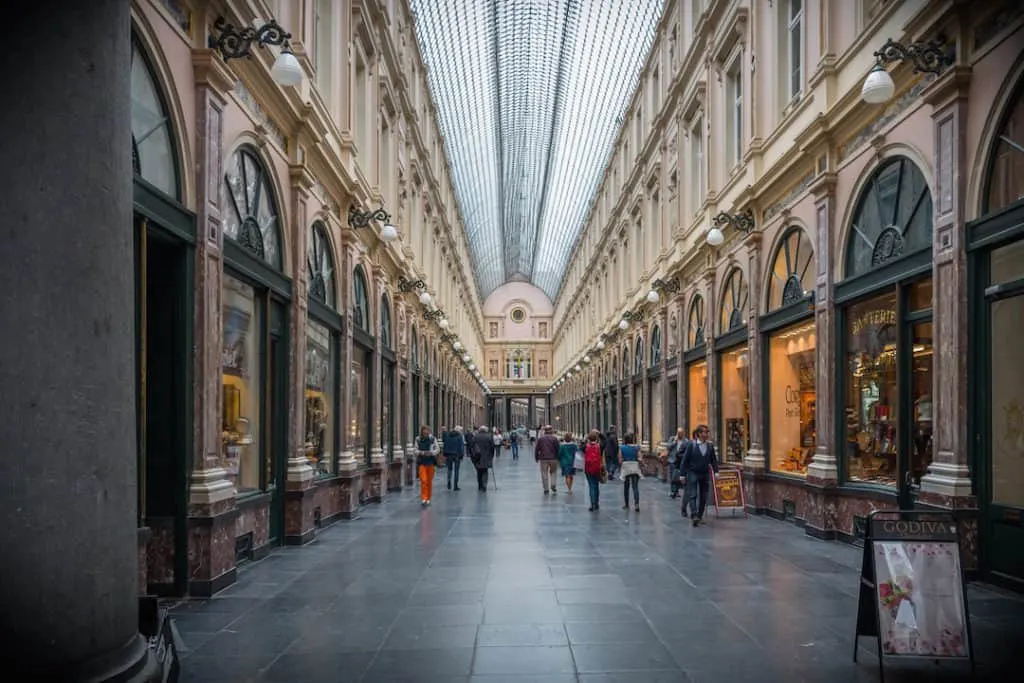
Brussels: Belgian Chocolate Tasting Tour – The best Belgian chocolatiers will ply your palate with specialty concoctions and traditional favorites. Learn the history of chocolate along with myths and legendary accounts of its use over the centuries. Click here for more information.
Brussels: 3-Hour Guided Art Nouveau Architecture Tour – Brussels is said to be the birthplace of the art nouveau movement. Learn about its origins and see examples in the Bailli district. Finish up at the home of famous art nouveau architect Victor Horta, now preserved as a museum. Click here for more information.
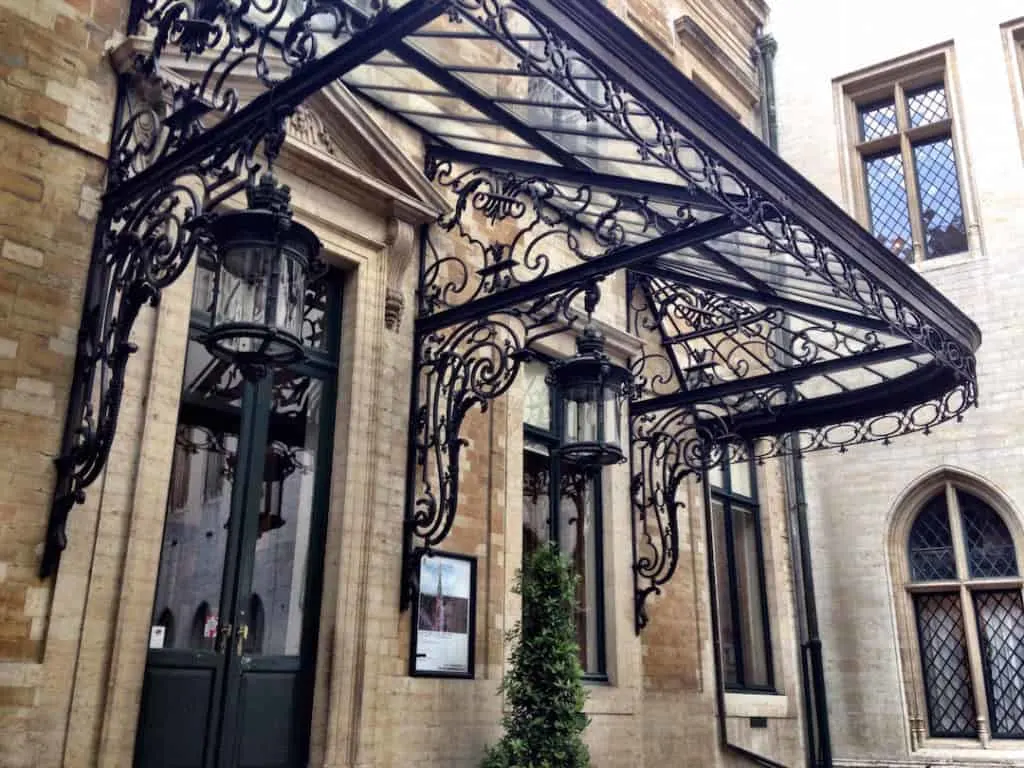
Quick List of Hotels in Brussels
See Our Detailed Post on Where to Stay in Brussels: Hotels and Neighborhoods
Off the Beaten Path Europe: Romania
One of the less frequently visited places in Europe for Americans, Romania is nonetheless getting on people’s radar. During our odyssey across Europe in order to get to the Winter Olympics in Russia, we regretted that we had to cut our time short in Romania.
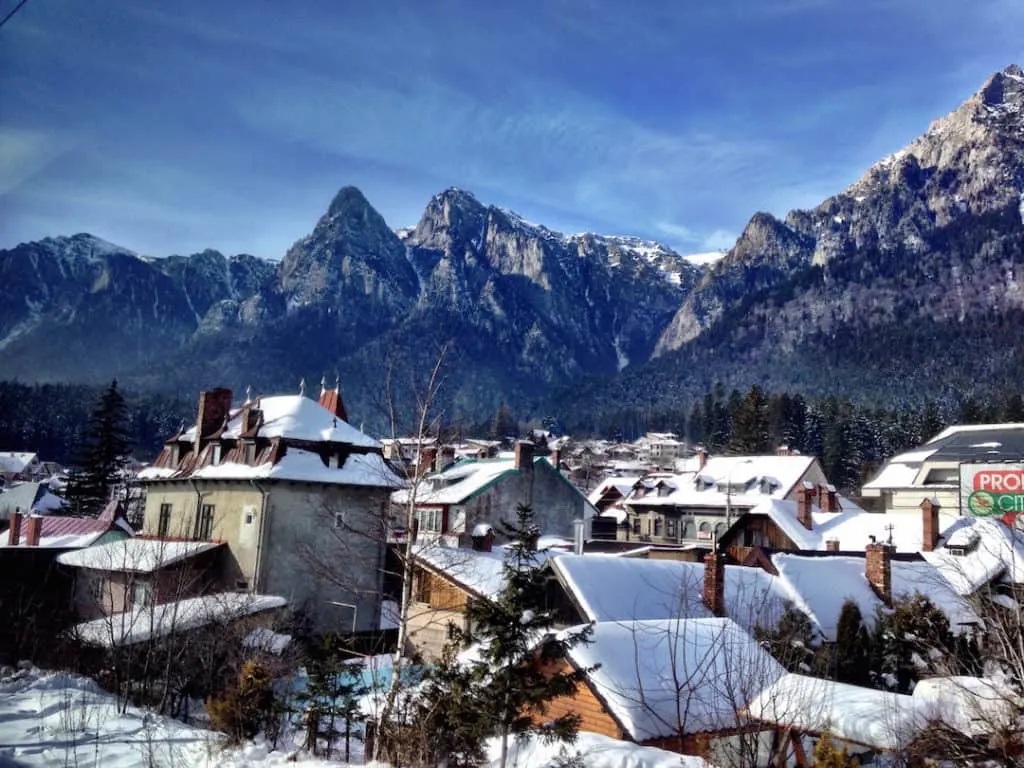
While we did stay in Bucharest for a couple of nights, the most memorable portion of our time in Romania was taking the night train from Hungary on the Budapest to Bucharest route. The train travels through some of the most non-touristy destinations in Eastern Europe, in regions that aren’t easily accessible to the casual visitor except perhaps in summer. I awakened on the train to see the Sighisoara train station sign go slowly rolling by. We had planned to spend a couple of days there and to this day, we regret our initial schedule had to change.
The Romanian cities of Sighisoara, Sibiu, and Brasov (in the Transylvania region) are definitely considerations in addition to Bucharest when you’re deciding where to go in Europe off the beaten path. Another contender is Timisoara, closest to the Hungarian border and first to revolt in 1989 against the Communist regime, with a diverse cultural profile. Timisoara is actually considered the capital city of Banat, which is a historical region (independent for a short time after WWI) now divided by Hungarian, Serbian, and Romanian modern borders. Each of these cities has its own personality, along with history which dates back to pre-medieval times.
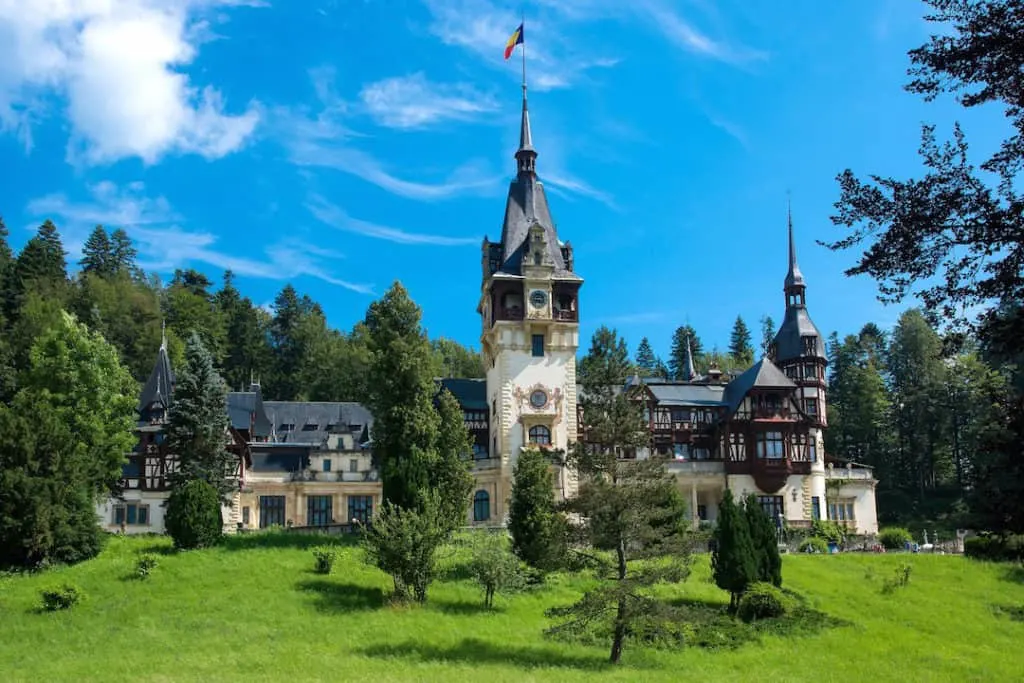
The scenery in the Carpathian mountains competes with other off the beaten path destinations in Europe and comes out a winner in the “most beautiful places” category. It is simply breathtaking. Glimpses of the old ways are everywhere. In many respects, aside from Bucharest – and even in parts of Bucharest, Romania is simply frozen in time.
Conversely, Romania is one of the most desirable places to be in terms of online access and internet speed. Plus, there is an added benefit for Americans evaluating where to go in Europe off the beaten path: Romania’s transitional status as a Schengen candidate. As of this writing, you get 90 days in Romania on your American passport, which can considerably extend your overall time in Europe.
Things to Do to Acquaint Yourself with Romania
Dracula’s Castles Full-Day Tour from Bucharest – Tour the history and heart of Transylvania in a twelve-hour tour which visits the castles at Peles and Bran, as well as the medieval city of Brasov. Decide for yourself which is the myth of Dracula and the legend of Vlad the Impaler. Click here for more information.
Relics of Communism in Bucharest: 2-½ Hour Walking Tour – Communism was the cornerstone of Romanian society for decades until the amazing moment when the crowd turned on Ceausescu during a speech he gave in 1989. Explore the important sites and neighborhoods with an English-speaking guide to learn this important history. Click here for more information.
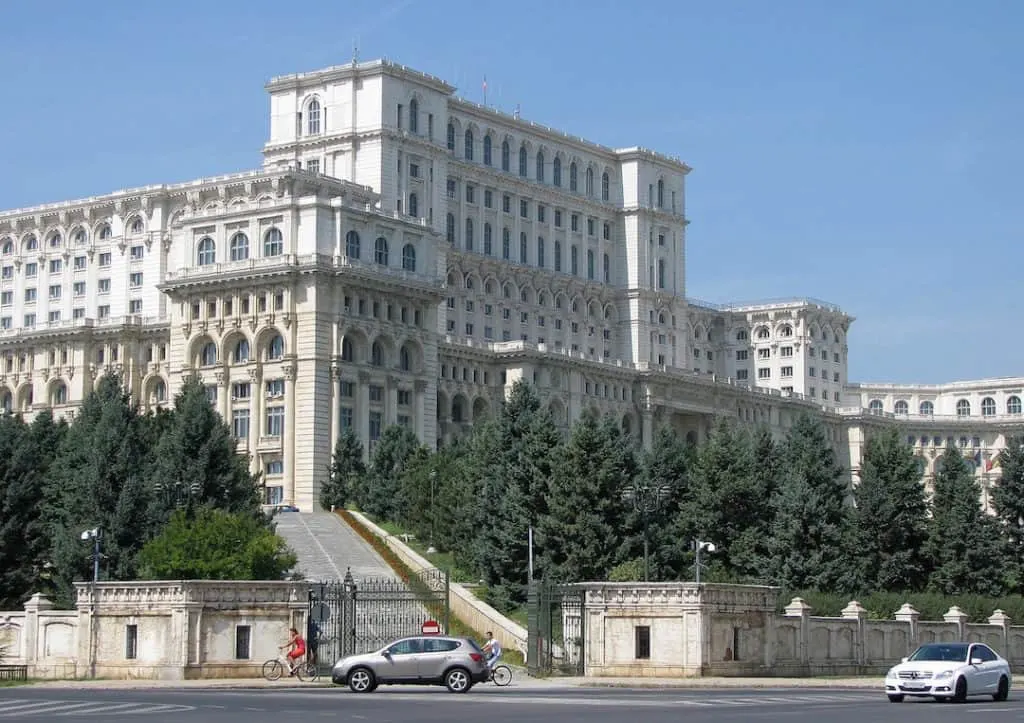
3-Hour Dark Side of Bucharest Walking Tour – Bucharest has a murky history with a turbulent dark side, including Communist oppression and torture, prostitution during its Golden Age (when it was referred to as “Little Paris”), a modern-day serial killer, along with tales of vampires and the macabre. Learn the details over a drink at a former brothel, a cemetery walk, and other stops on this tour. Click here for more information.
Bucharest: Sites and Bites Tour with a Local – A four hour history tour with English-speaking guide through Bucharest’s old and new districts, covering events from medieval to modern. Combine your new knowledge with three courses of local delicacies, served on platters with Romanian wine or beer. Click here for more information.
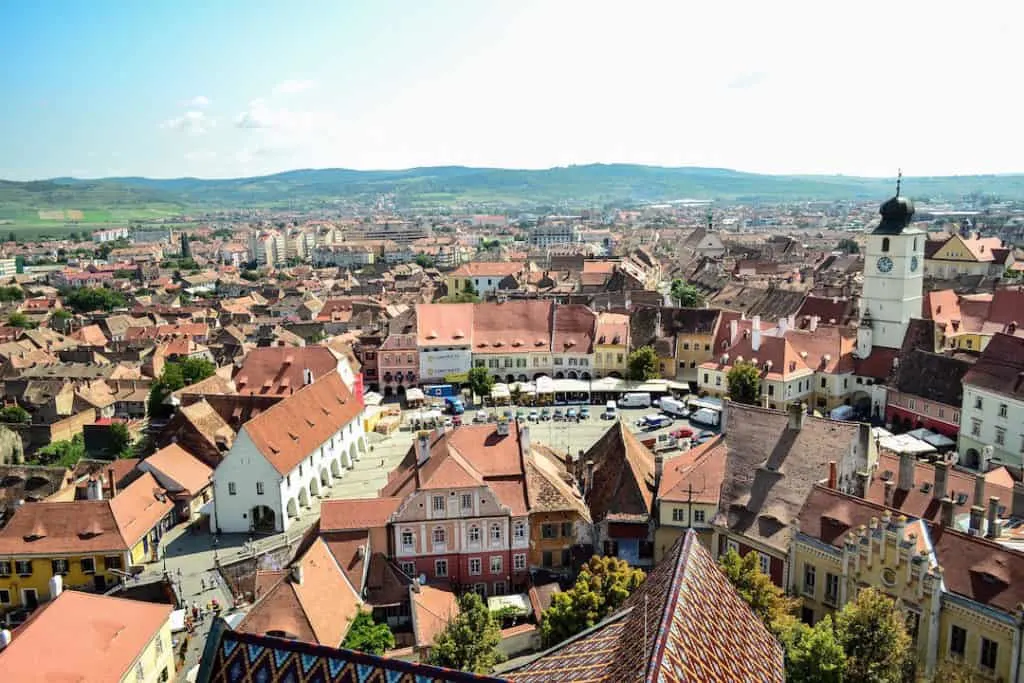
From Sibiu: Private Tour to the Pearls of Transylvania: Sighisoara, Biertan and Malancrav – Drive across the Transylvanian Plateau in private car or van with English-speaking guide to visit fortified medieval villages, churches and the UNESCO Heritage site of Sighisoara, a perfectly intact 16th century village which was the birthplace of Vlad the Impaler. Click here for more information.
Carpathian Private Brown Bear Watching Experience – More than 50% of the European brown bear population west of Russia lives in the Carpathian Mountains. Travel with an experienced ranger for a thrilling 3-hour wilderness encounter in a “hideout” from which to view bears and other wildlife in their natural habitat. Bring binoculars, appropriate attire for weather and hiking, extra camera batteries. Click here for more information.
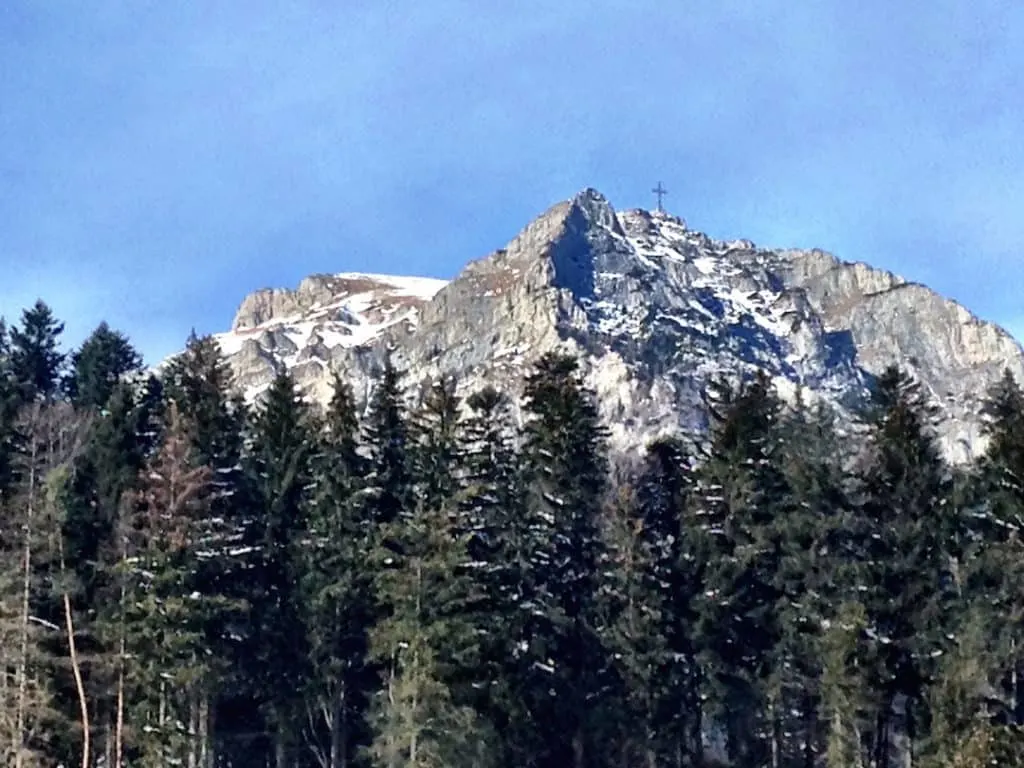
Banat Region Day Trip from Timisoara – Be driven by car or van with English-speaking guide to discover an abundance of culture and architectural styles in the historic cities of Arad, Soimos, and others including the unique circular village of Charlottenburg. Click here for more information.
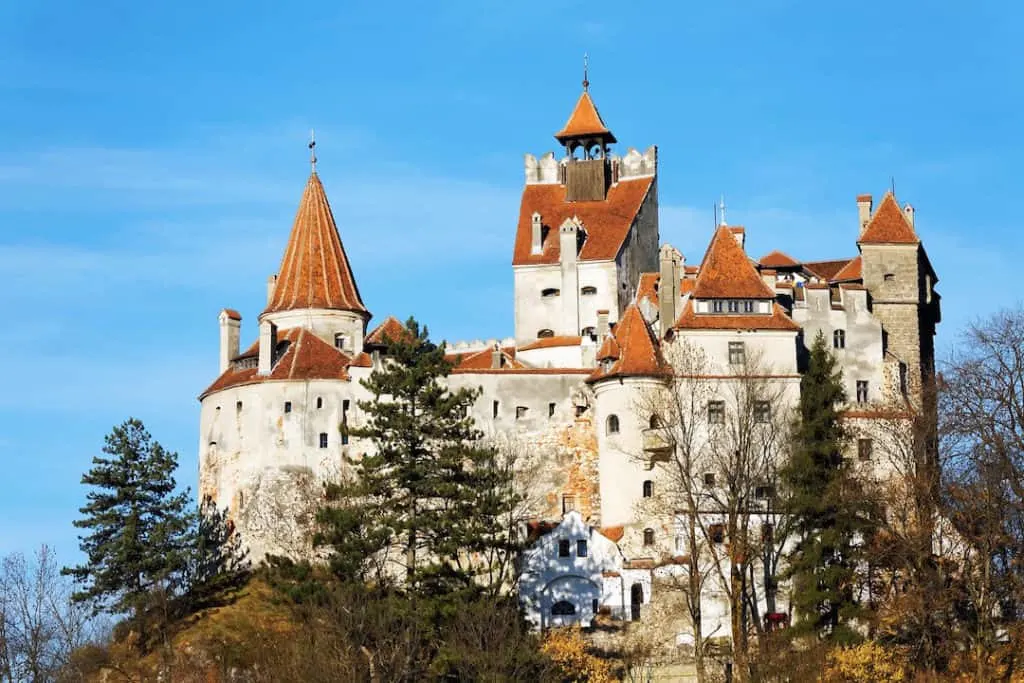
Transylvania and Dracula’s Castle 2-Day Tour from Bucharest – Travel through the Carpathian mountain passes to visit historic castles, monasteries and citadels in Sibiu, Sighisoara, Brasov and Bran. Stay at a guesthouse in the enchanted mountain resort of Sinaia. Click here for more information.
Click Here for More Tours in Romania
Click Here to Check Out Hotels in Bucharest
Off the Beaten Path Europe: Istria
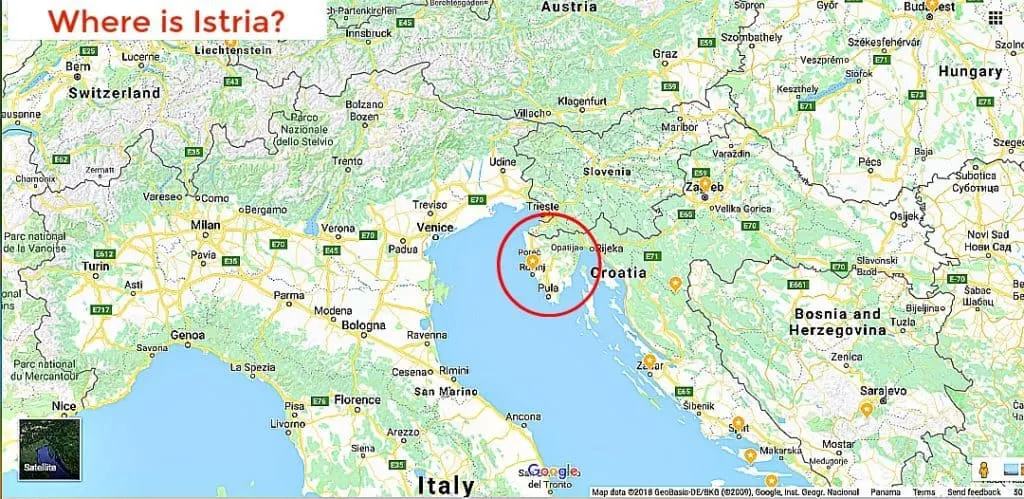
One of the unique emerging destinations in Europe is the Istrian peninsula, an anvil shaped region in the northern part of Croatia just south of the Slovenian border on the Adriatic Sea. It’s one of the less known places in Europe for Americans to visit. Even though they may be acquainted with Croatia, it’s more likely that they would have visited places like Split or Dubrovnik along the Dalmatian Coast in the southern part of the country.
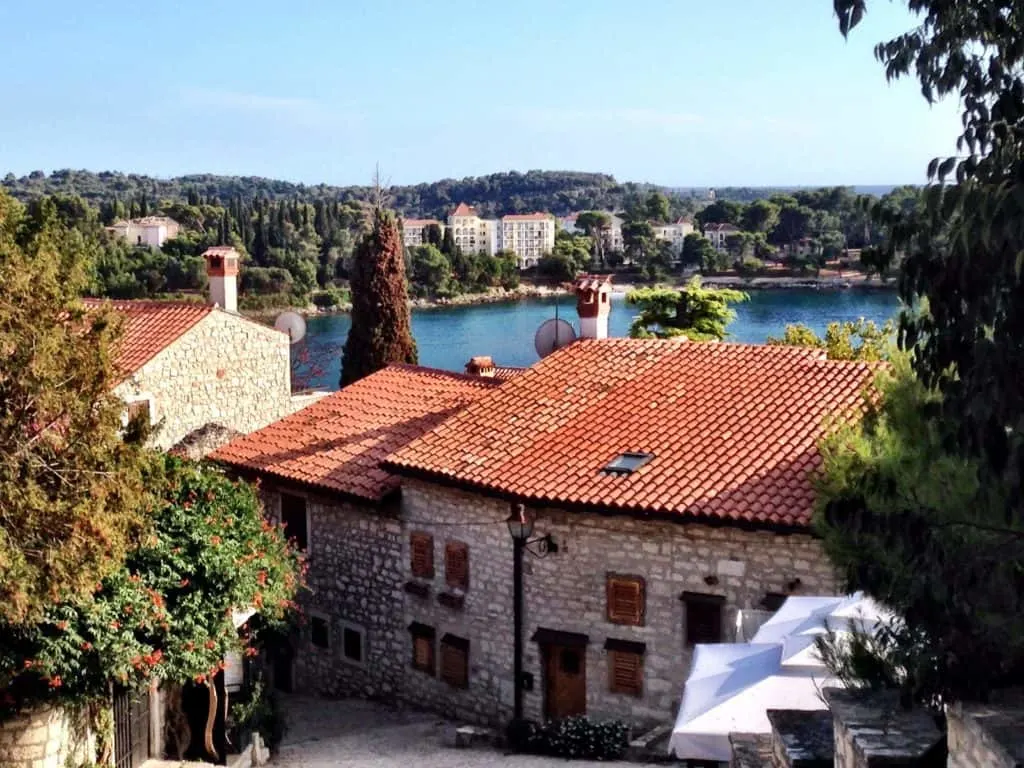
We think Istria is perhaps the best off the beaten path travel destination in Europe for a variety of reasons: the Croatian wine scene is amazing and the Italian influence (Istria was part of the Venetian Empire) is strong. We encountered tons of Italian tourists in the romantic little seaside town of Rovinj where we stayed, but not a single American. If you’re interested in gastronomy, Istria’s local food scene is magnificent: it’s a center for black and white truffles and their products, and the seafood is among the best we’ve had in Europe.
Istria’s shortcoming is that it doesn’t realize how incredible it is. – Steffani Cameron
The historical and mythical aspects of the Istrian experience are compelling, despite its small size. The river Mirna is mentioned in the myth of Medea; Jason and the Argonauts are said to have traversed Istria via its subterranean passageways. Later, Venetian conquerors traveled the Mirna to Buzet, passing the hilltop walled village of Motovun, one of the most beautiful villages in Europe, where it is said the local giant swept enemies away using an uprooted tree as a broom.
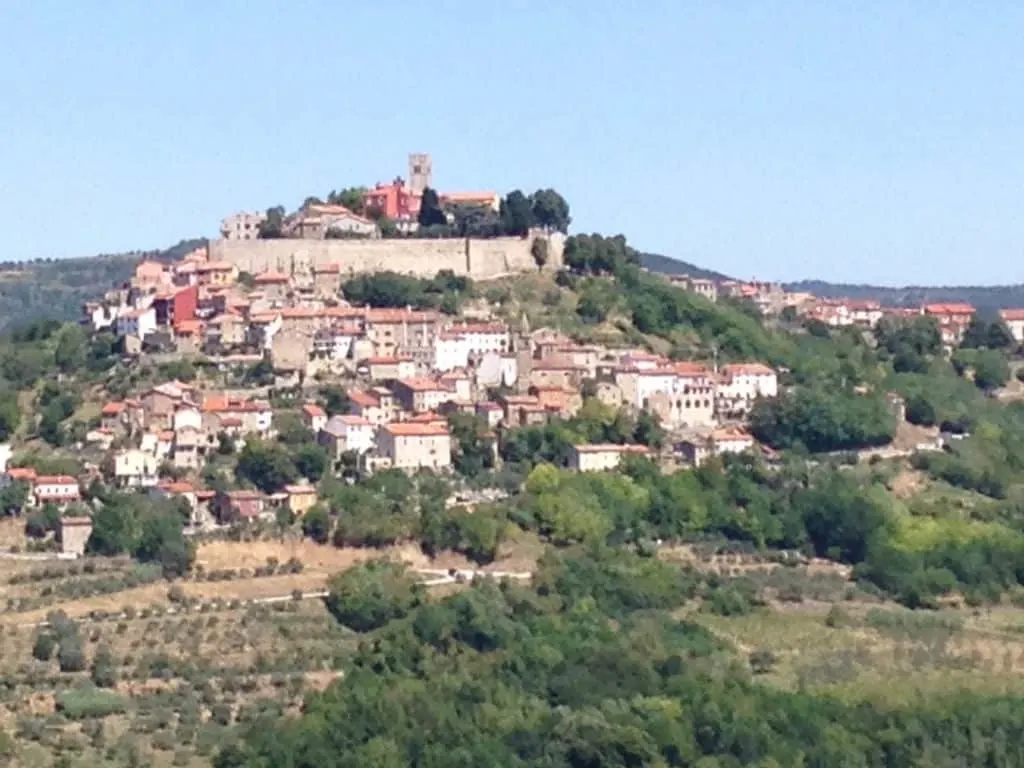
The historic city of Pula boasts the largest intact Roman coliseum is deserted in the off-season; you can wander through the centuries alone in the shadows of residual energy.

For being one of the less known places in Europe, Istria has been a crossroads throughout its history for vanquished empires, roving tribal hordes, and modern-day despots. Our friends spoke of grandparents who’d been citizens of six different countries, despite being born and living in the same house their entire lives.

Among all the less frequently visited destinations in Europe, Istria will pull you in like a magnet. Istrians like to say, “Tuscany copied us!” and perhaps they’re right. The Mediterranean climate, humble architecture, rocky seaside coast and sweeping interior vistas will captivate you. No matter how long you stay, it might never be enough.
Things to Do to Get Acquainted with Istria
Istria County: Gastronomic Day Tour – Outstanding wine, goat cheese, truffles and homemade brandy are on the tasting menu along with a traditional Istrian brunch during this leisurely country drive with a small group through the beautiful countryside with an English-speaking foodie. Click here for more information.
From Pula, Bale or Rovinj: Sophisticated Istrian Wine Tour – A five hour small group tour tour in an air-conditioned van with an English-speaking wine lover takes you to two local wineries for an up close and personal encounter with Istrian winemaking families and their cellars of local wine. A two-course lunch is included; be prepared to taste 4 wines minimum at each stop. Click here for more information.
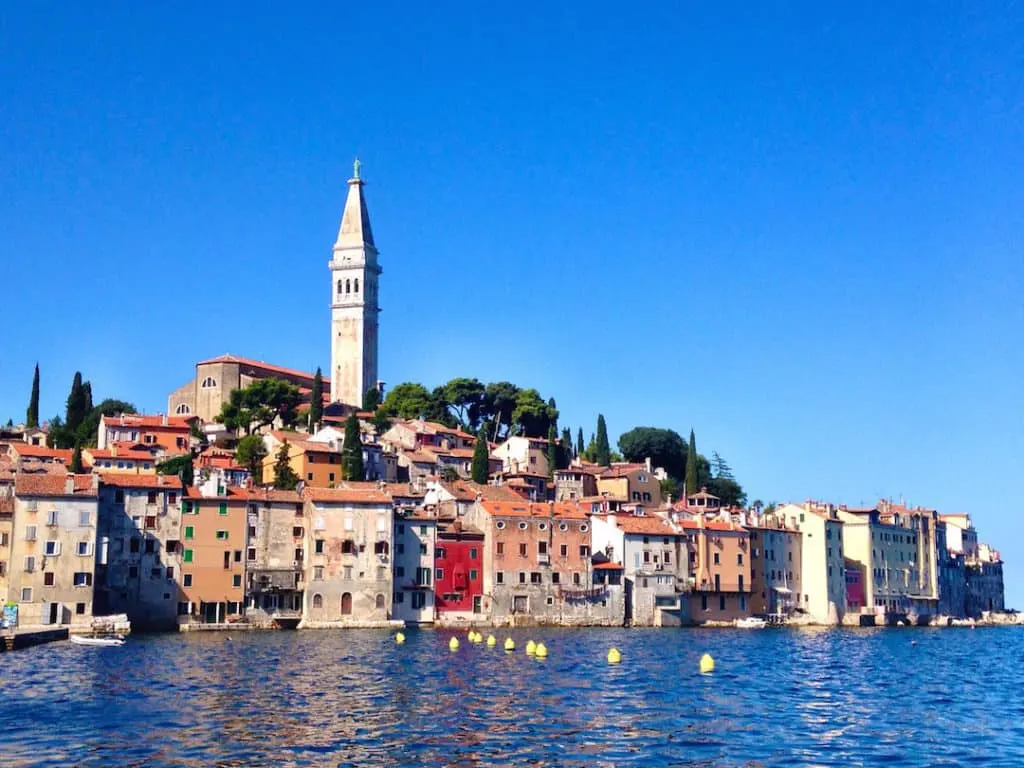
Pula: Electric Bike Sightseeing Tour – A 2 hour ride is made all the more leisurely with electric motor assistance on a route that takes you through Roman streets, past the amphitheater and other Roman landmarks, as well as along the coastal promenade. Click here for more information.
Rijeka: Pula, Rovinj, and Panoramic Istrian Coast Tour – Admire the incomparable Pula Roman amphitheater, take a walking tour of romantic coastal town Rovinj, and have a panoramic drive along the Istrian coast. Click here for more information.
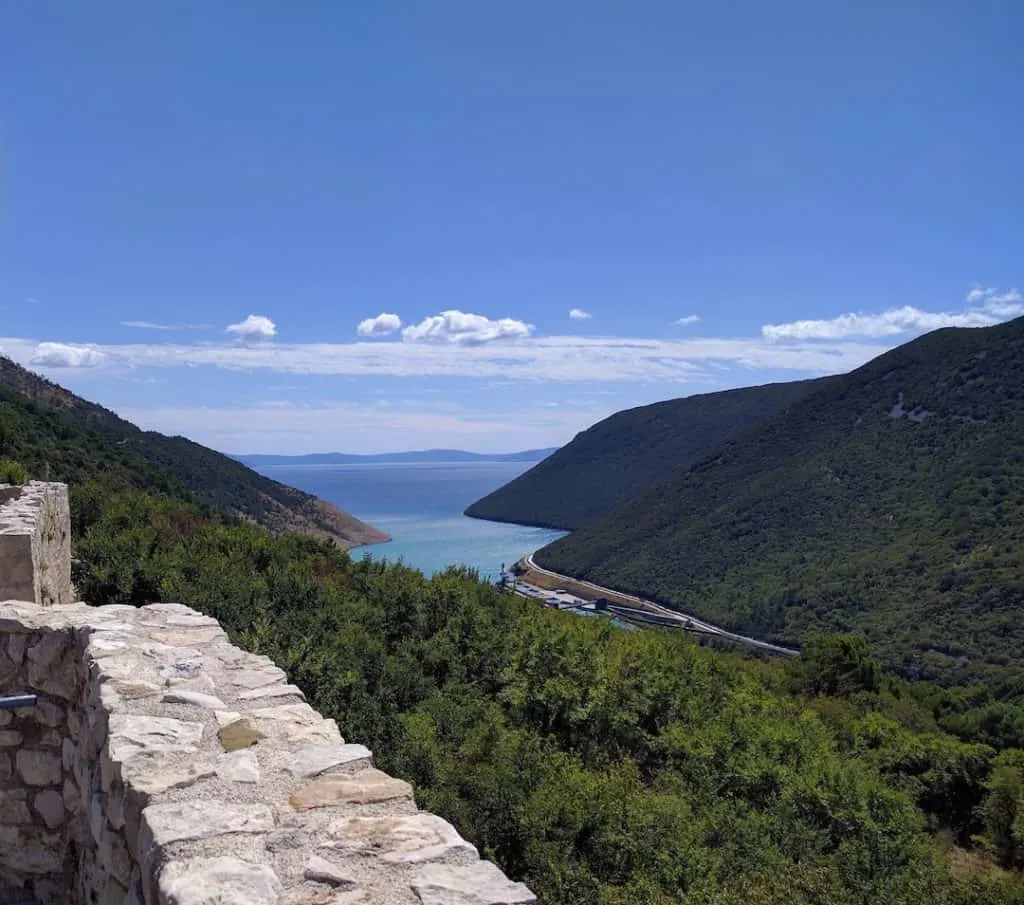
Click Here to See More Tours in Istria
Click Here to Check Out Hotels in Istria (Map View)
We hope we’ve given you sufficient insights and information to whet your appetite with these ideas of how to go off the beaten path in Europe to unique places you haven’t previously considered. If you haven’t traveled extensively, these recommendations should still be well within your comfort zone. And even if you’ve already been “across the pond” multiple times, chances are you haven’t been to all of these less frequently visited destinations in Europe. We hope that we’ve inspired your next trip and would love to hear your plans!
Pinnable Images
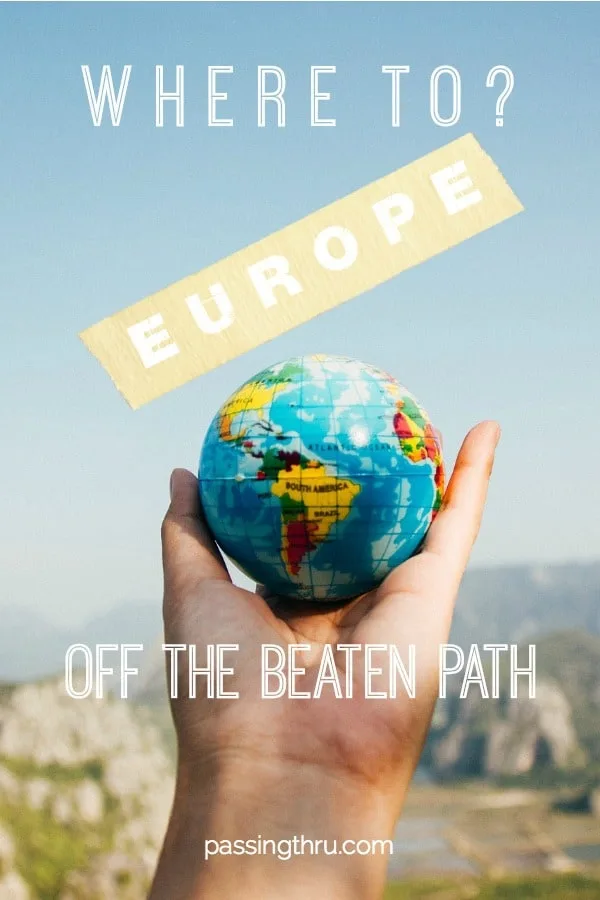
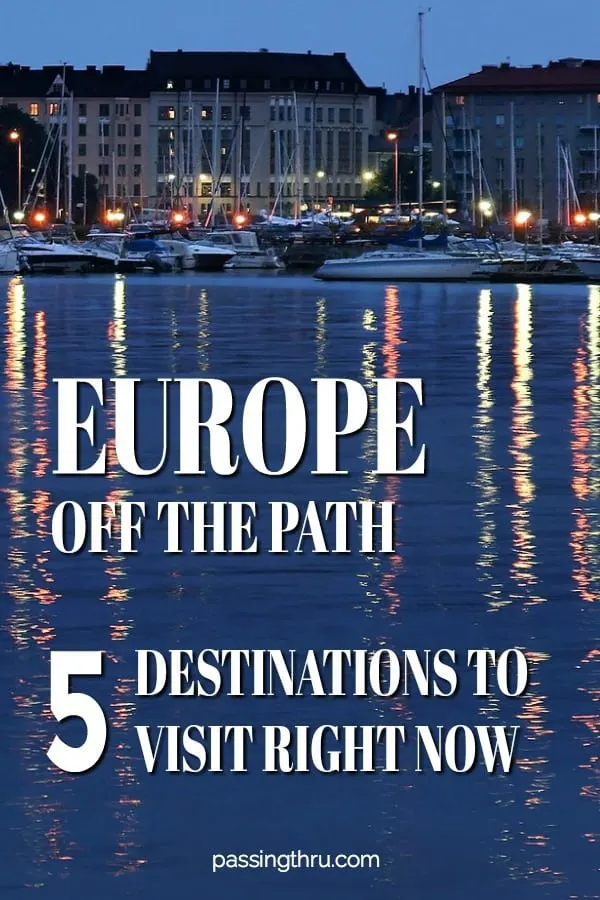
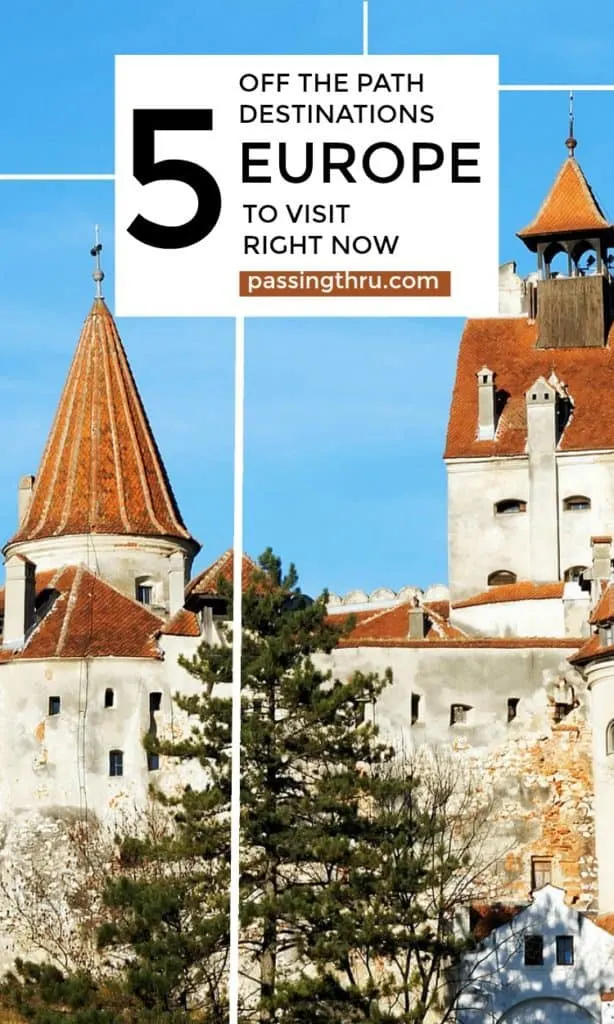
Tips for Trip Success
Book Your Flight
Find an inexpensive flight by using Kayak, a favorite of ours because it regularly returns less expensive flight options from a variety of airlines.
Book Your Hotel or Special Accommodation
We are big fans of Booking.com. We like their review system and photos. If we want to see more reviews and additional booking options, we go to Expedia.
You Need Travel Insurance!
Good travel insurance means having total peace of mind. Travel insurance protects you when your medical insurance often will not and better than what you get from your credit card. It will provide comprehensive coverage should you need medical treatment or return to the United States, compensation for trip interruption, baggage loss, and other situations.Find the Perfect Insurance Plan for Your Trip
PassingThru is a participant in the Amazon Services LLC Associates Program. As an Amazon Associate I earn from qualifying purchases.
To view PassingThru’s privacy policy, click here.

Rob
Tuesday 26th of March 2019
Have visited Istria, Rovinj and the coast of Croatia- fantastic place with food and wine you’ll remember for years. Also, don’t miss Ljubiana and the rest of Slovenia.
The Seven Unique Wonders of the World That Need To Be On Your Bucket List | Passing Thru
Thursday 25th of January 2018
[…] Normandy is one of the underrated destinations in Europe we recommend you consider visiting […]
Seven Tips to Plan Your Summer Family Vacation On a Budget | Passing Thru
Wednesday 17th of January 2018
[…] with plenty of sunshine and pleasant temperatures. Hotel prices in Europe, especially if you go off the beaten path, can be affordable, and include plenty of extra […]
Charles McCool
Saturday 13th of January 2018
Lovely article, Betsy. I will bookmark this and try to remember to reference it when planning Europe travel. We are planning to visit Tallinn in a couple of months. Timisoara and Banat are on my mind, because my great-grandparents are from there and it is the only ancestral village(s) I have not yet been to.
Betsy Wuebker
Saturday 13th of January 2018
I am fascinated with the Banat region and want to learn more. More and more I'm learning about history I never knew existed. You'll love Tallinn, I'm sure, too.
Suze
Saturday 13th of January 2018
I used to live in Normandy so I was pleased that it made your list. We're visiting Tallinn in a few months, can't wait as it looks very picturesque
Betsy Wuebker
Saturday 13th of January 2018
I'm sure you will love Tallinn! We really loved Normandy and were sorry we couldn't spend more time there.